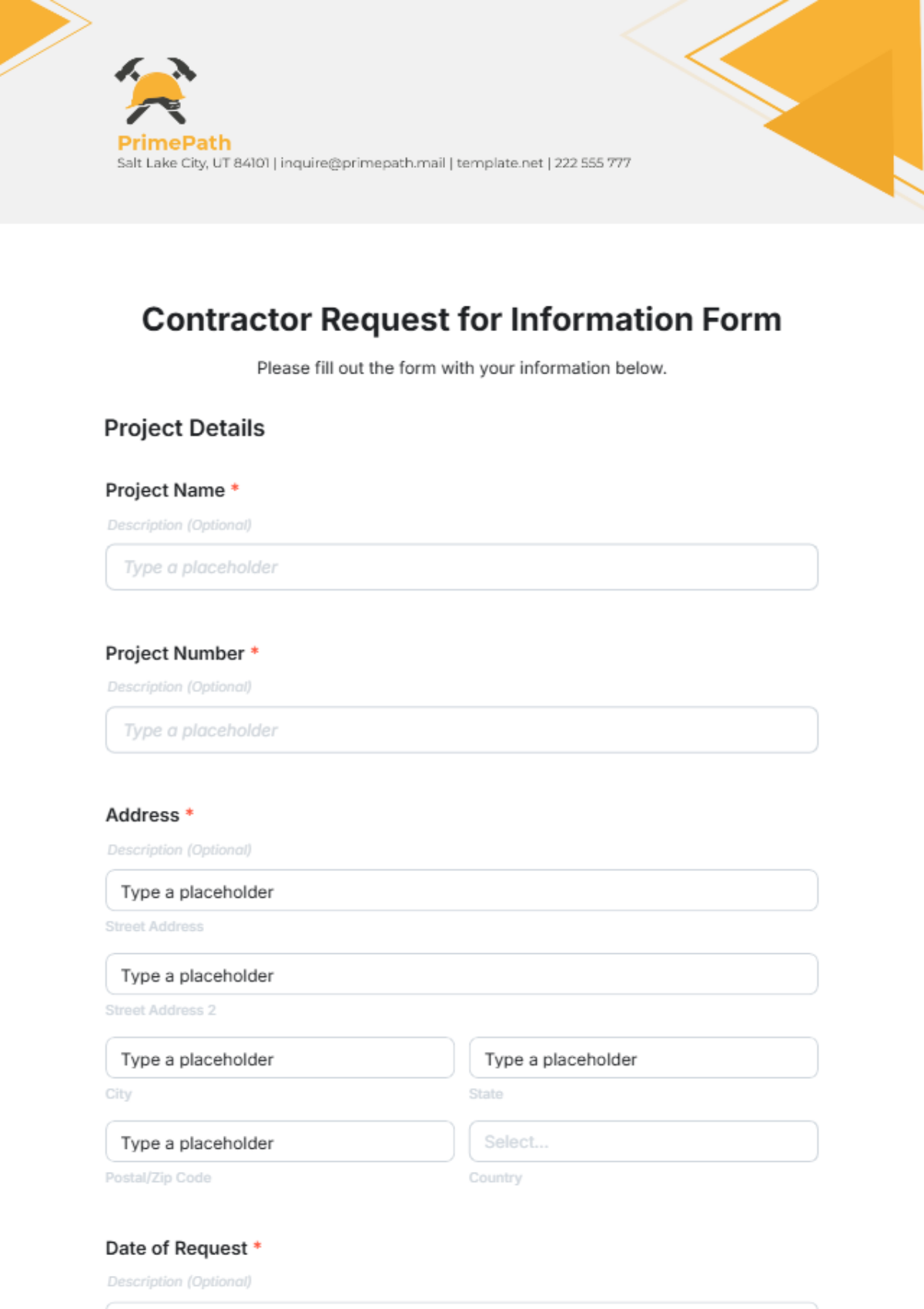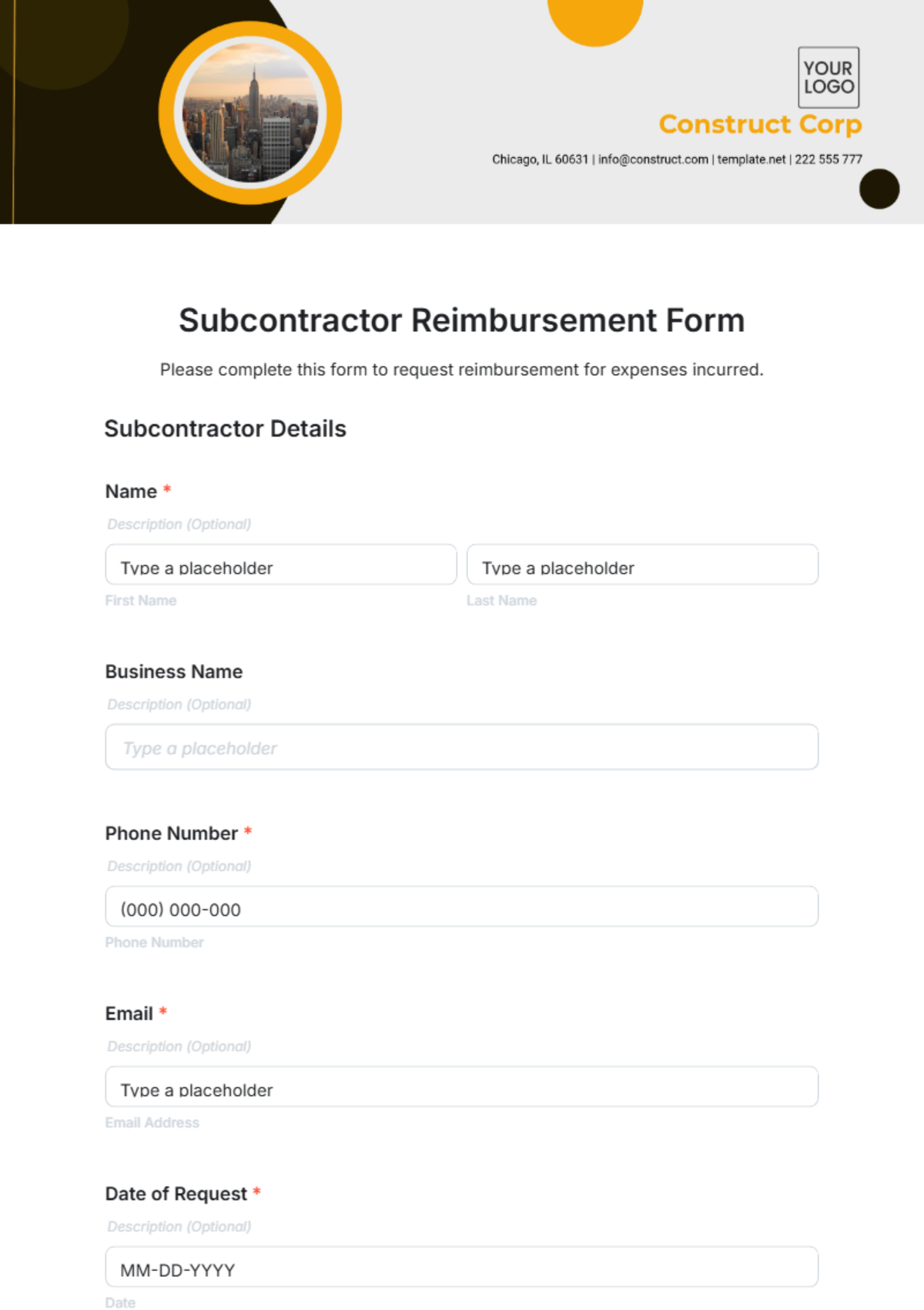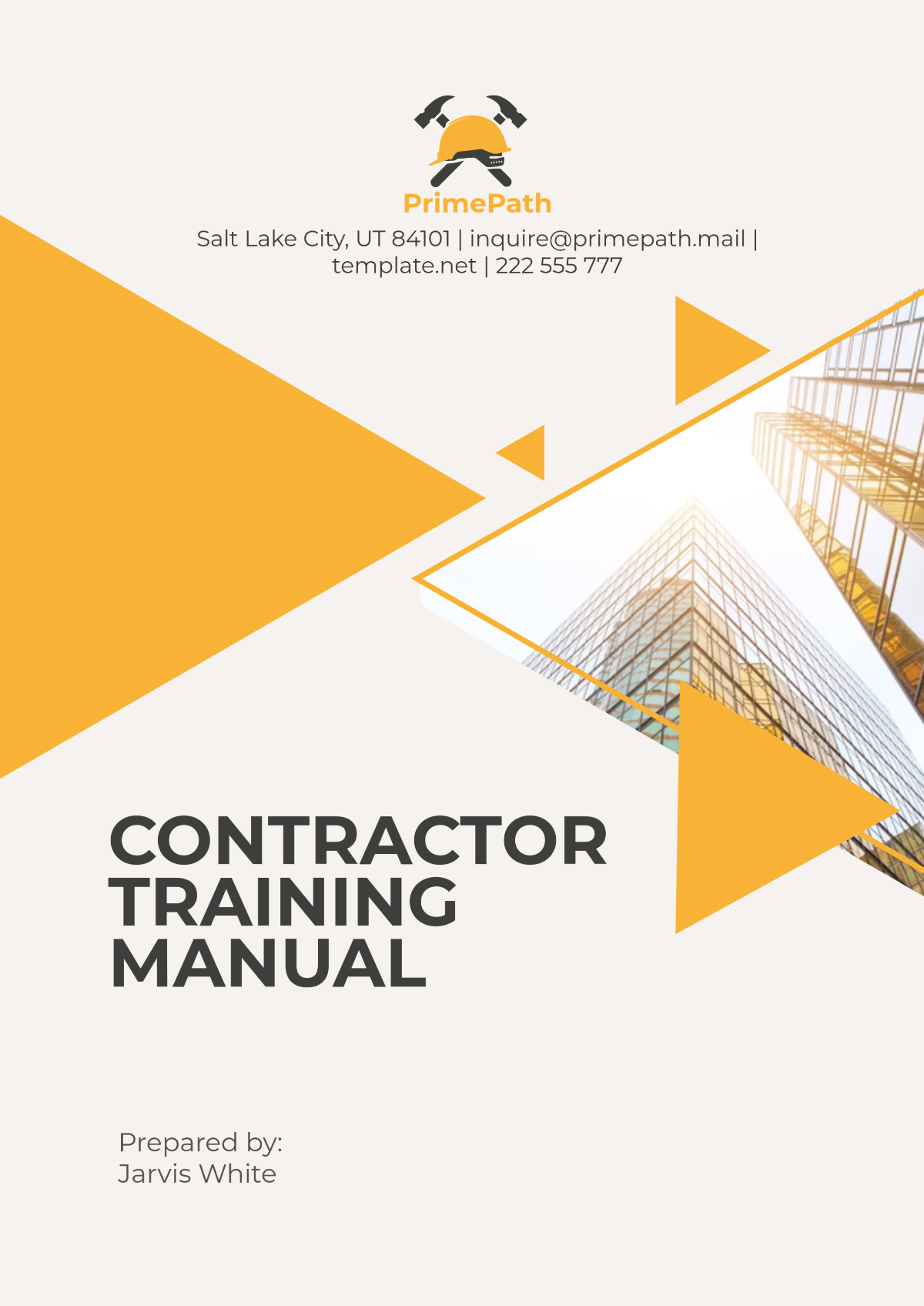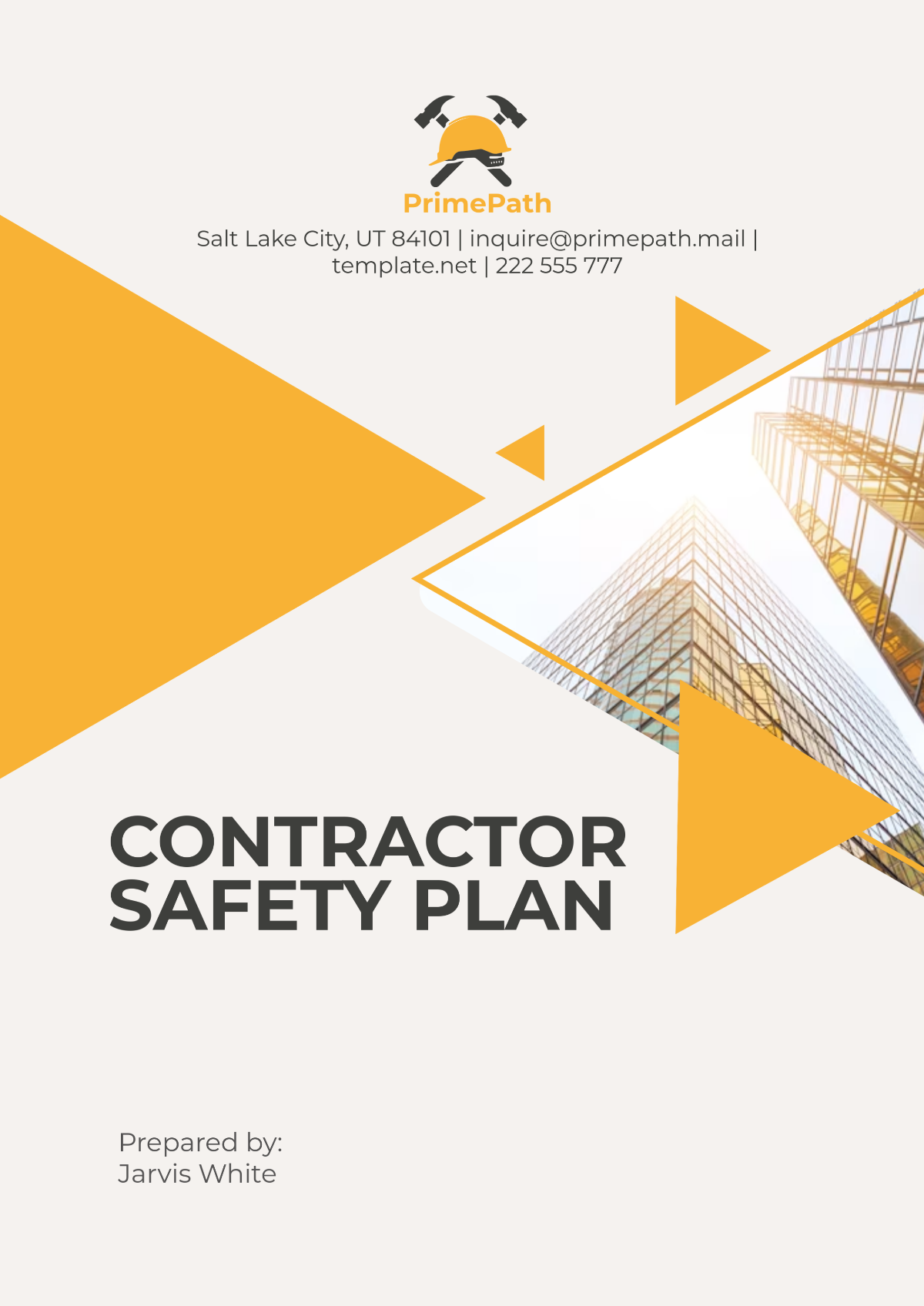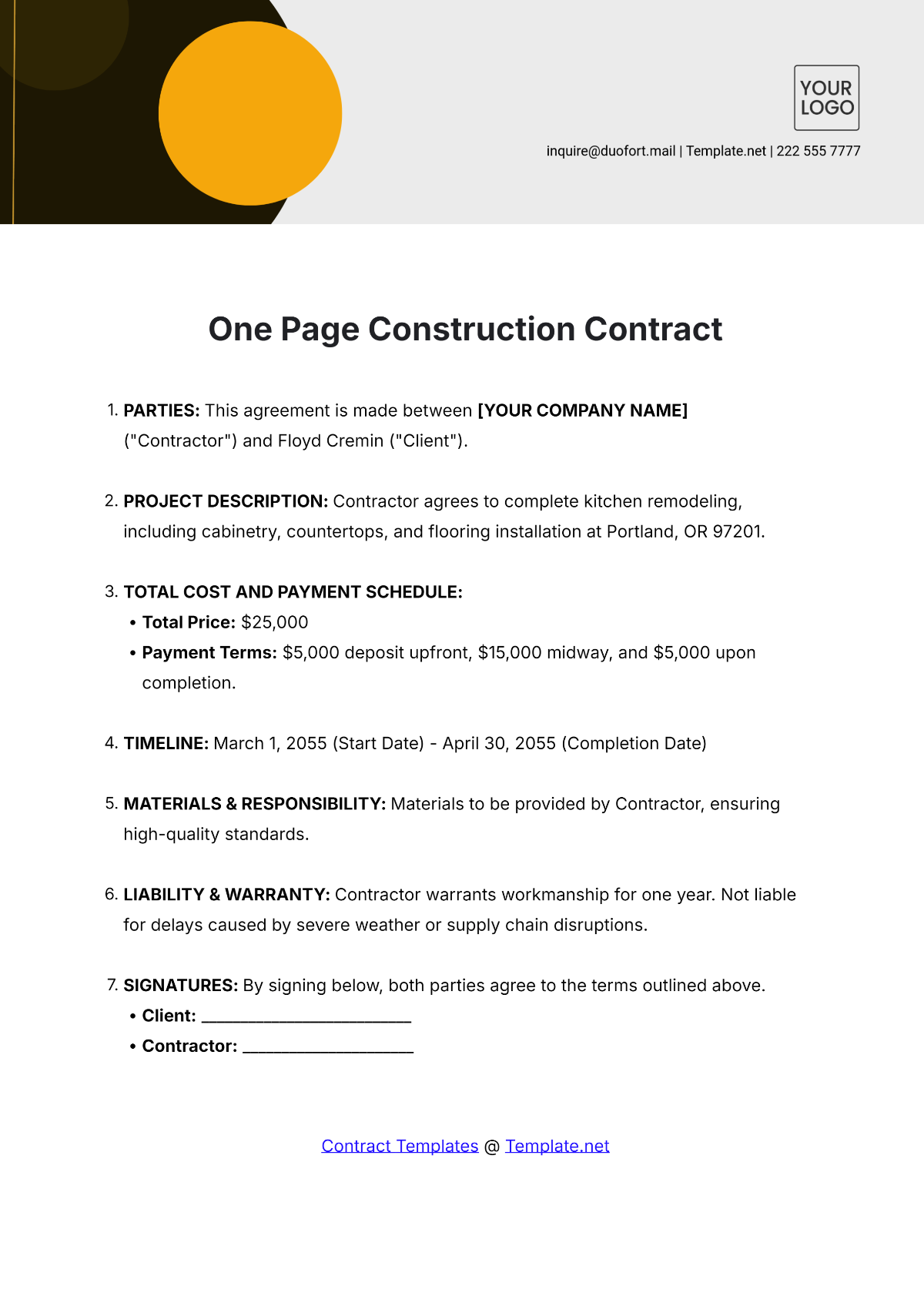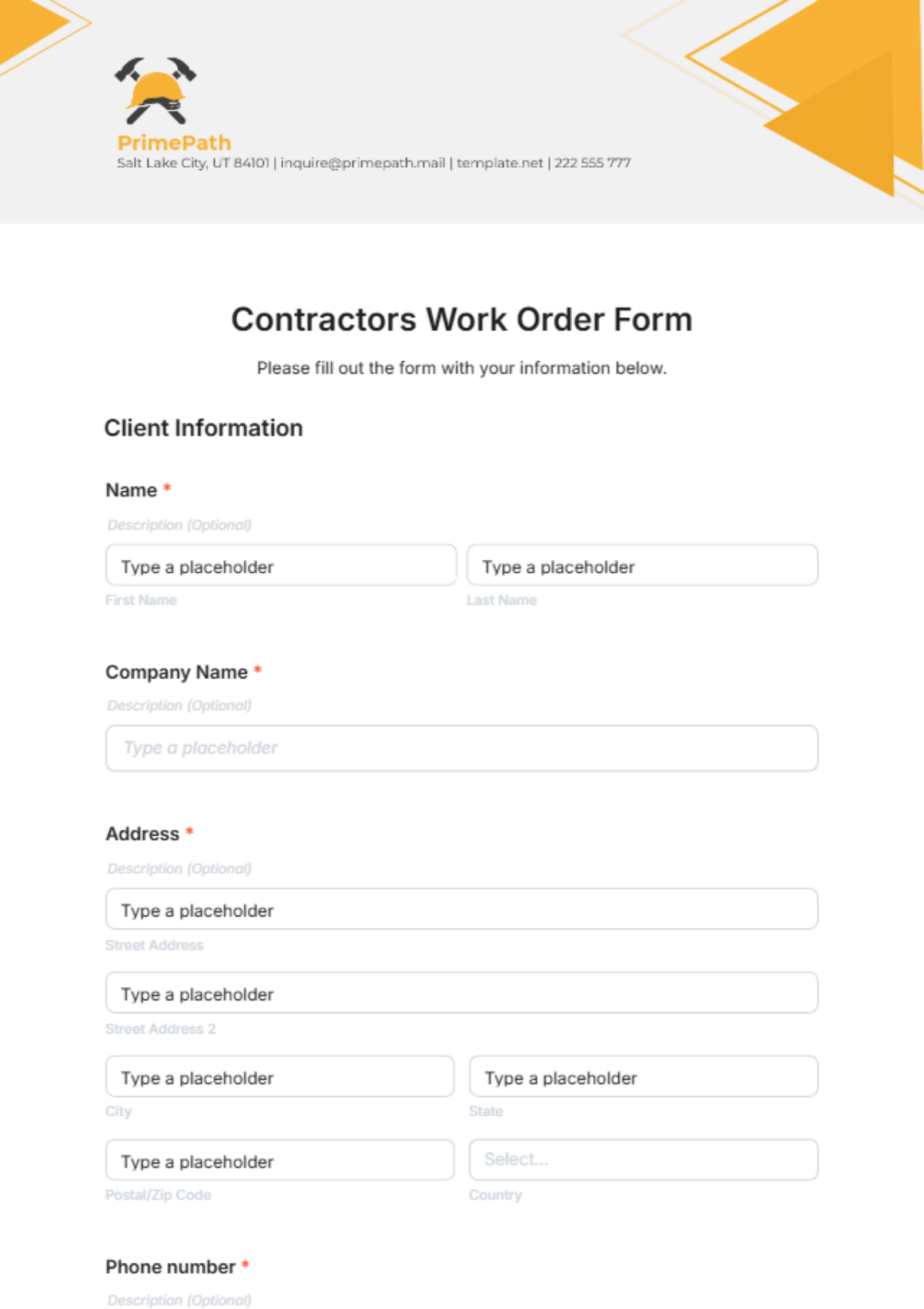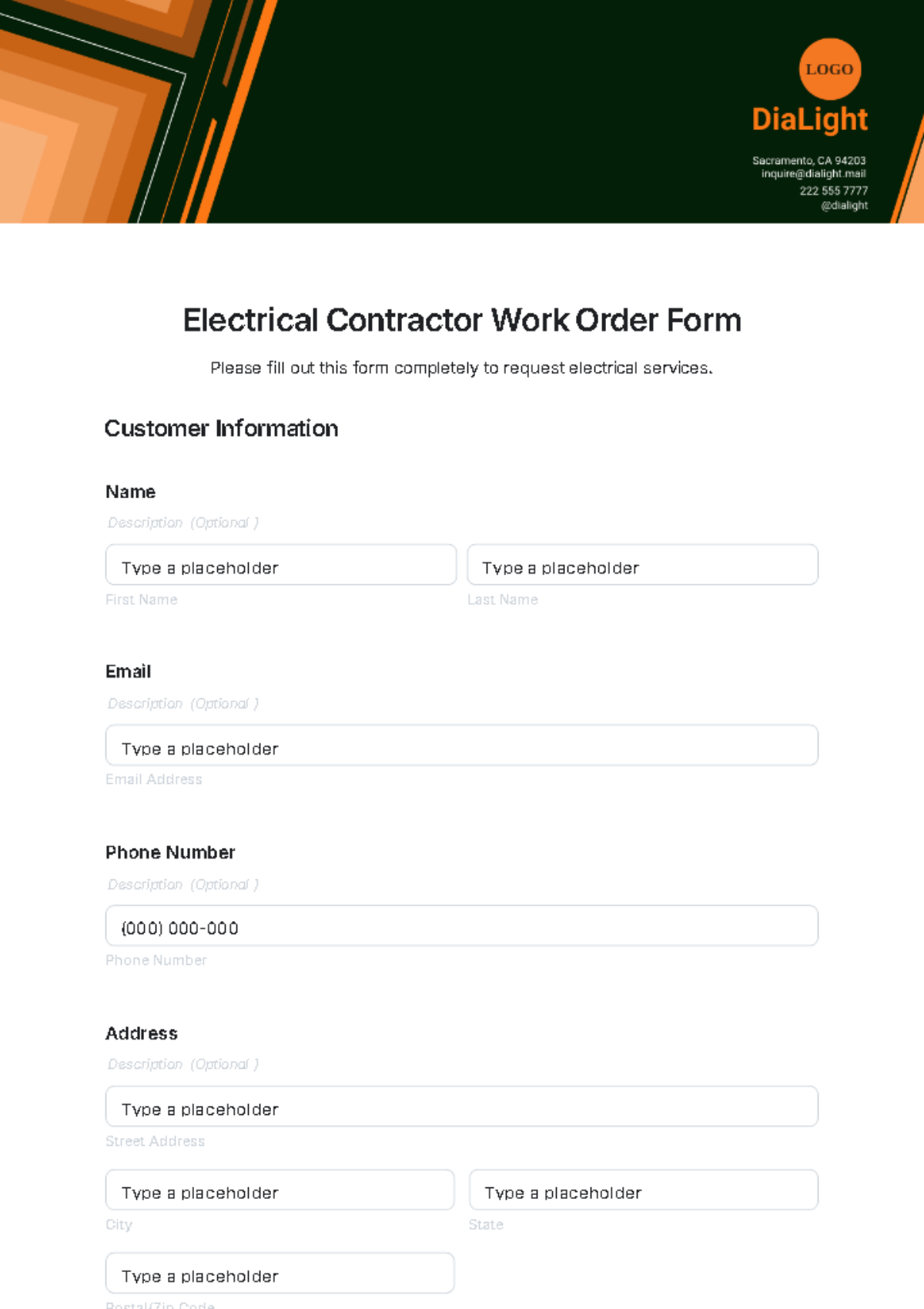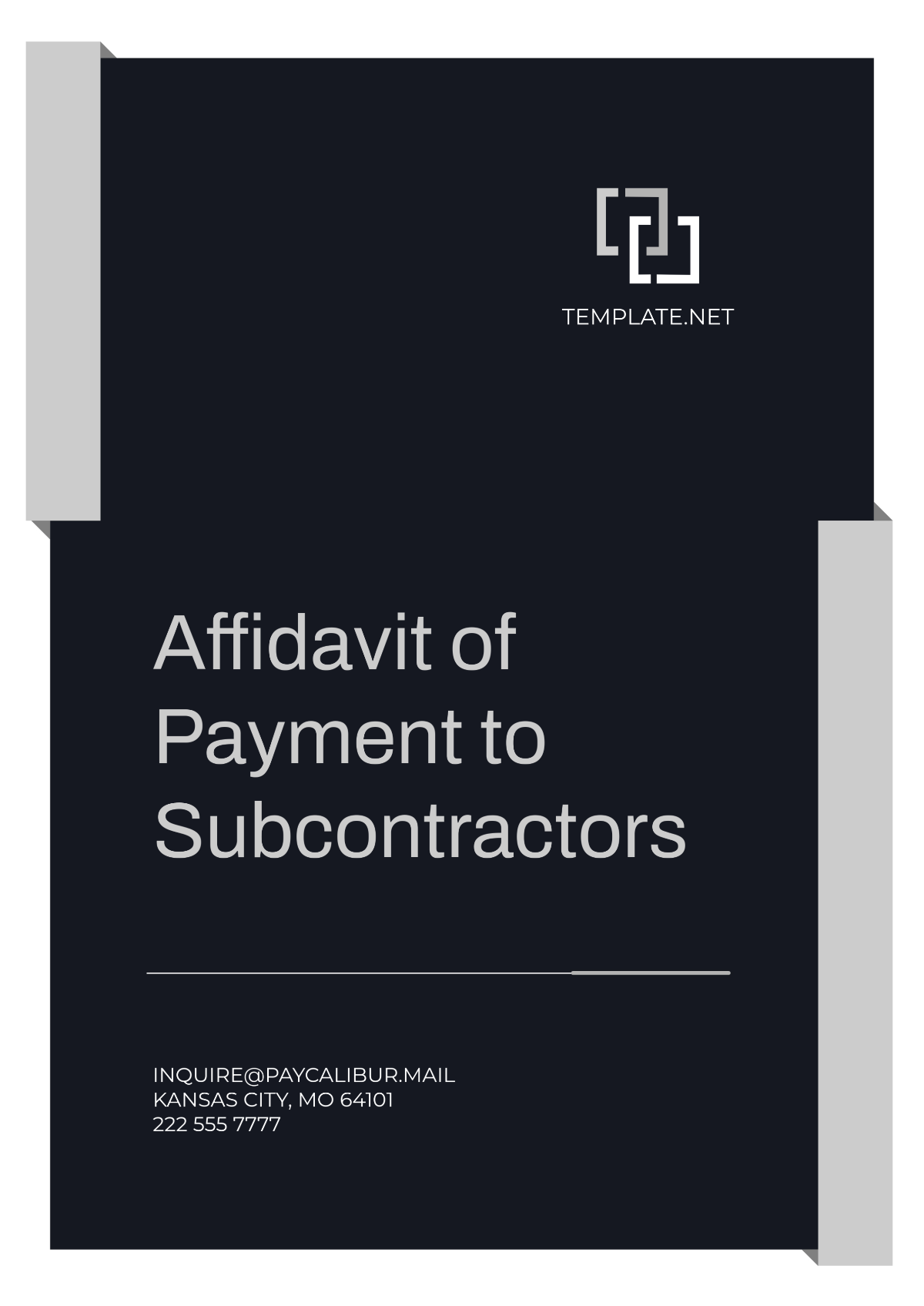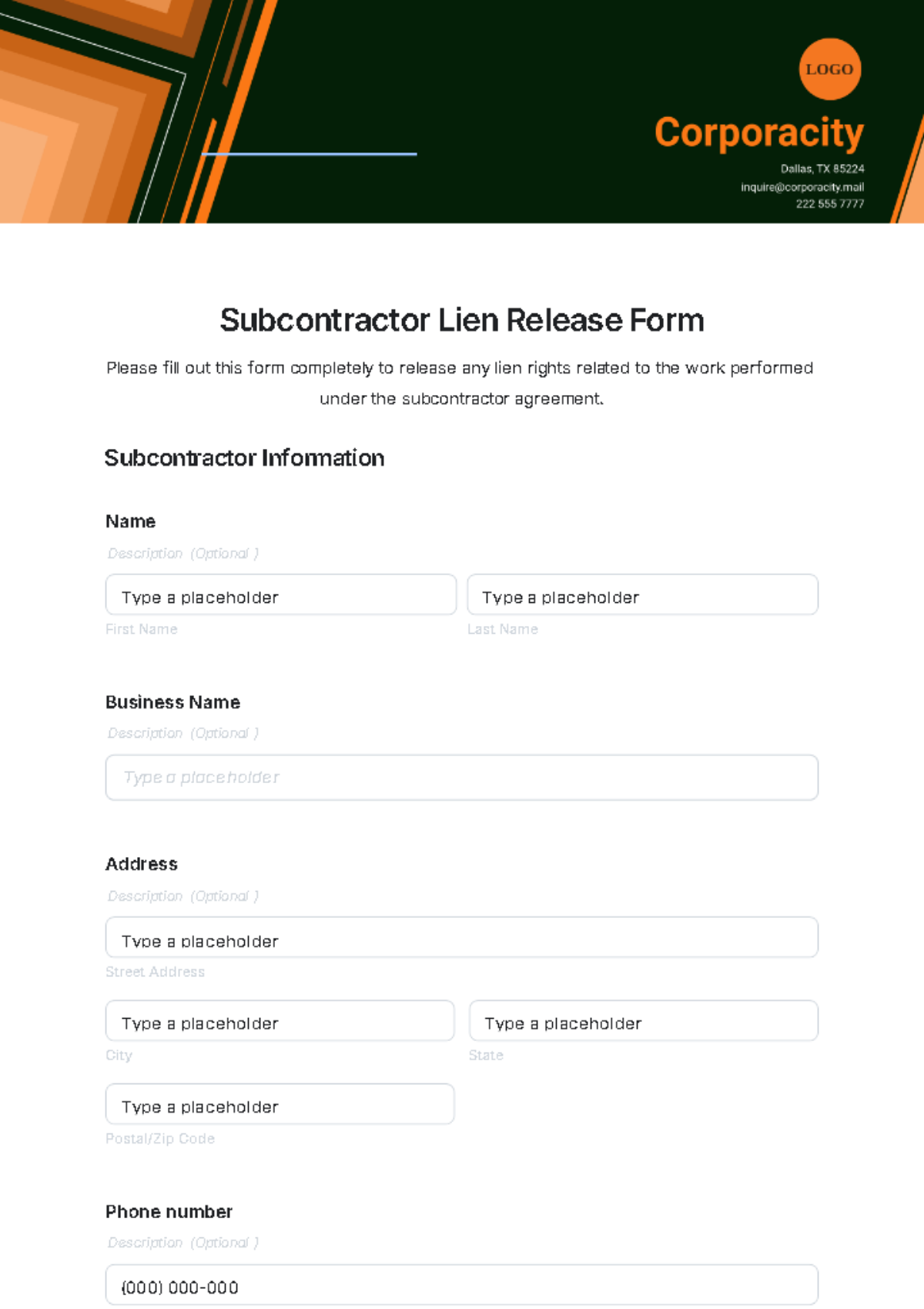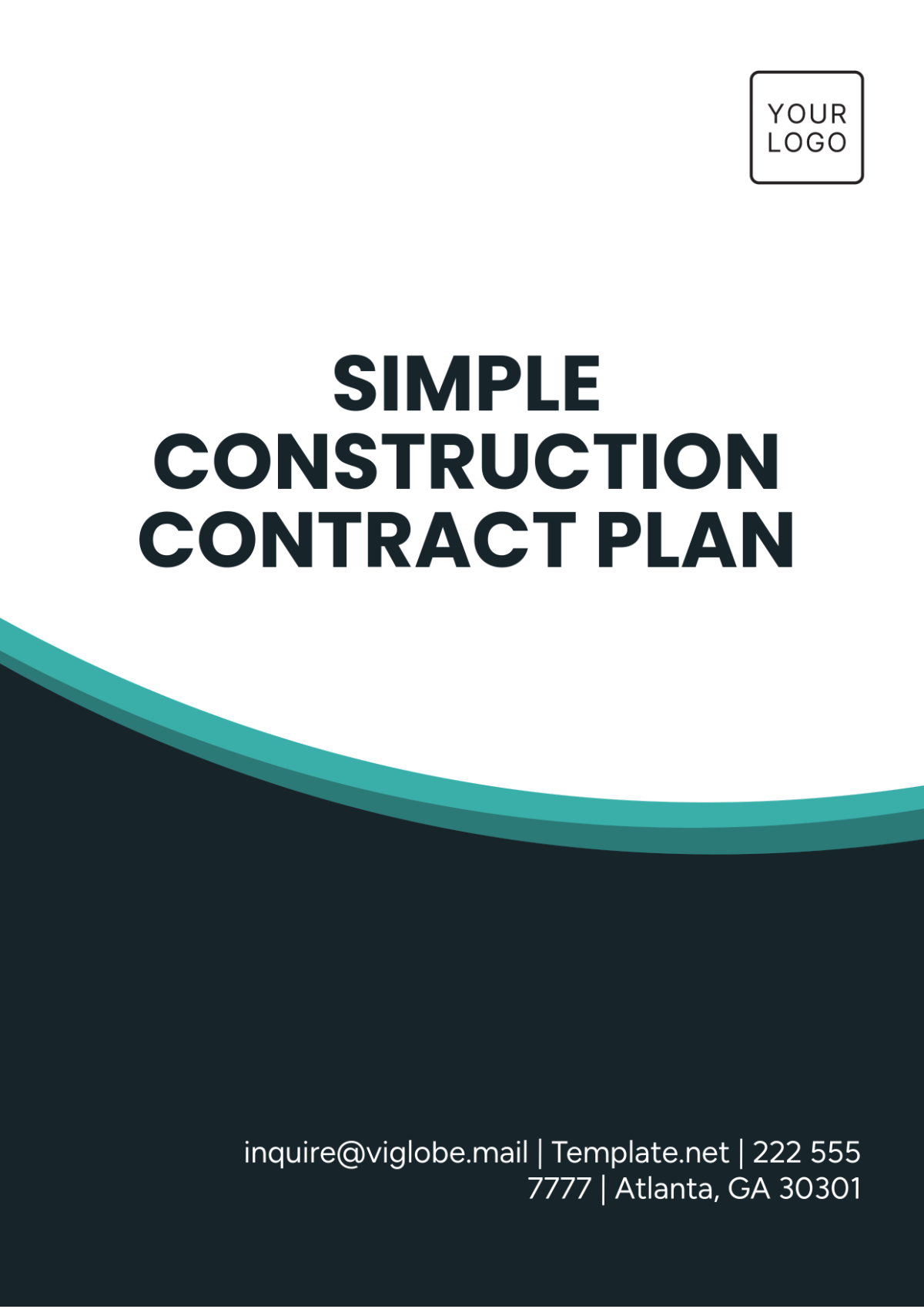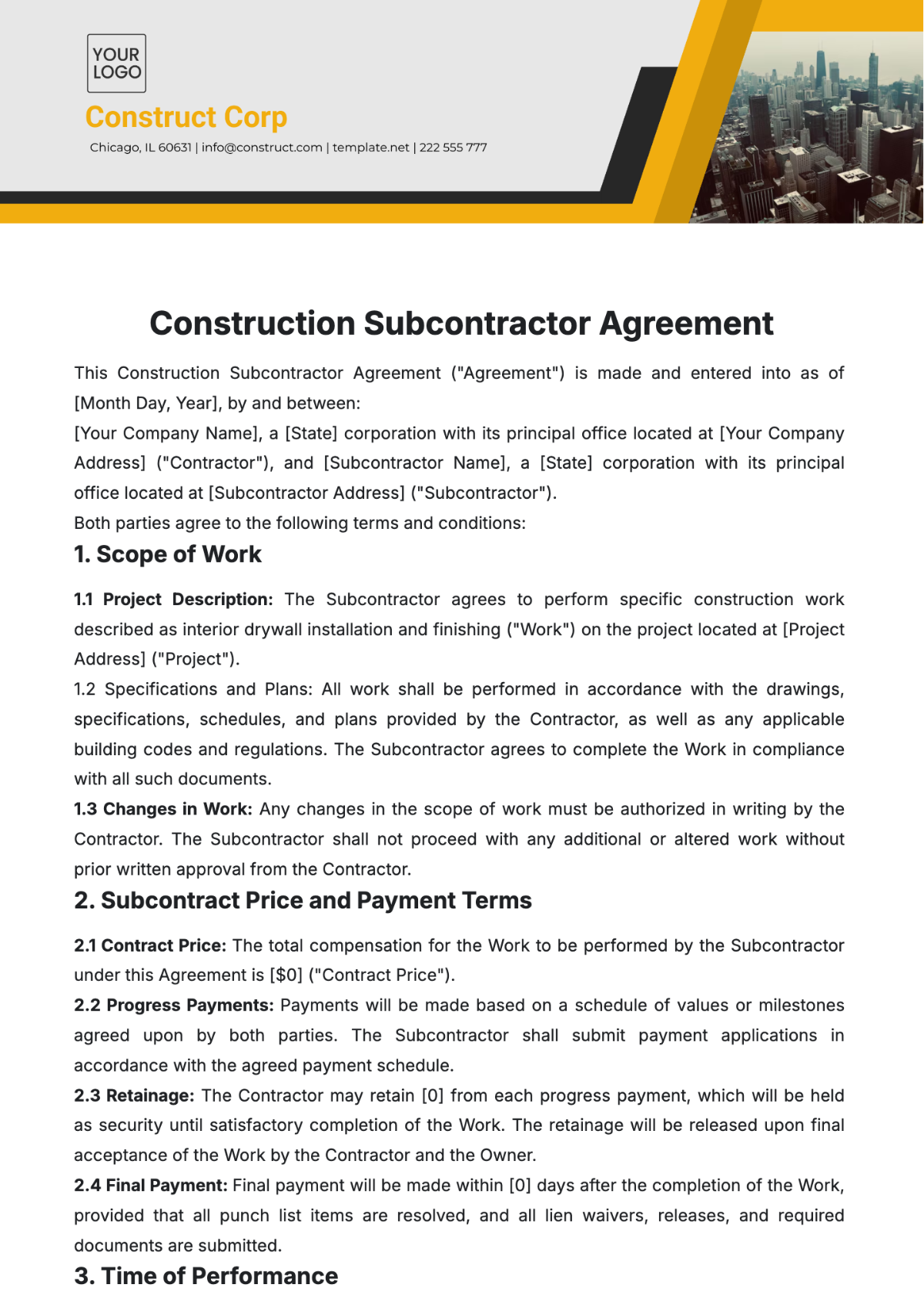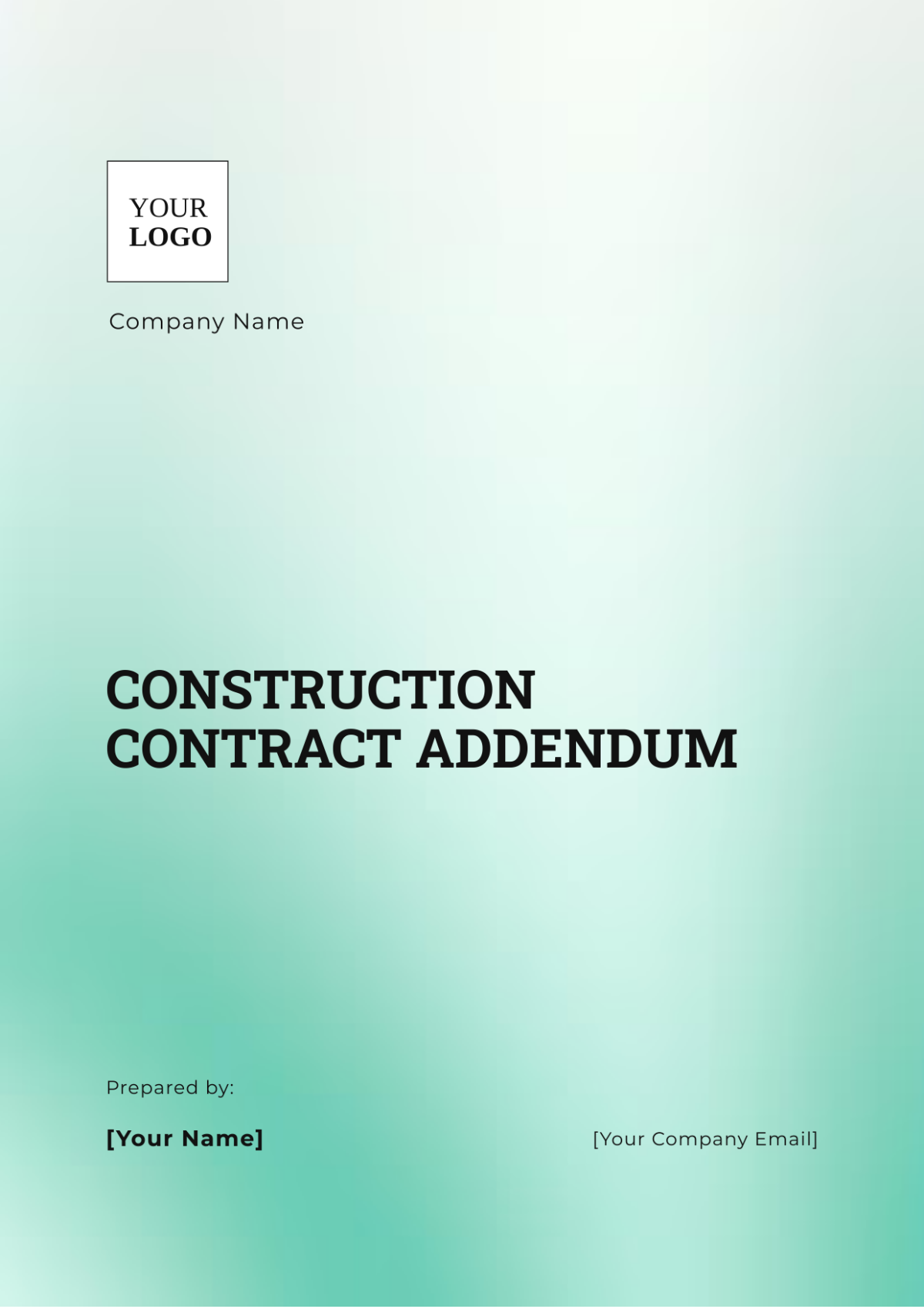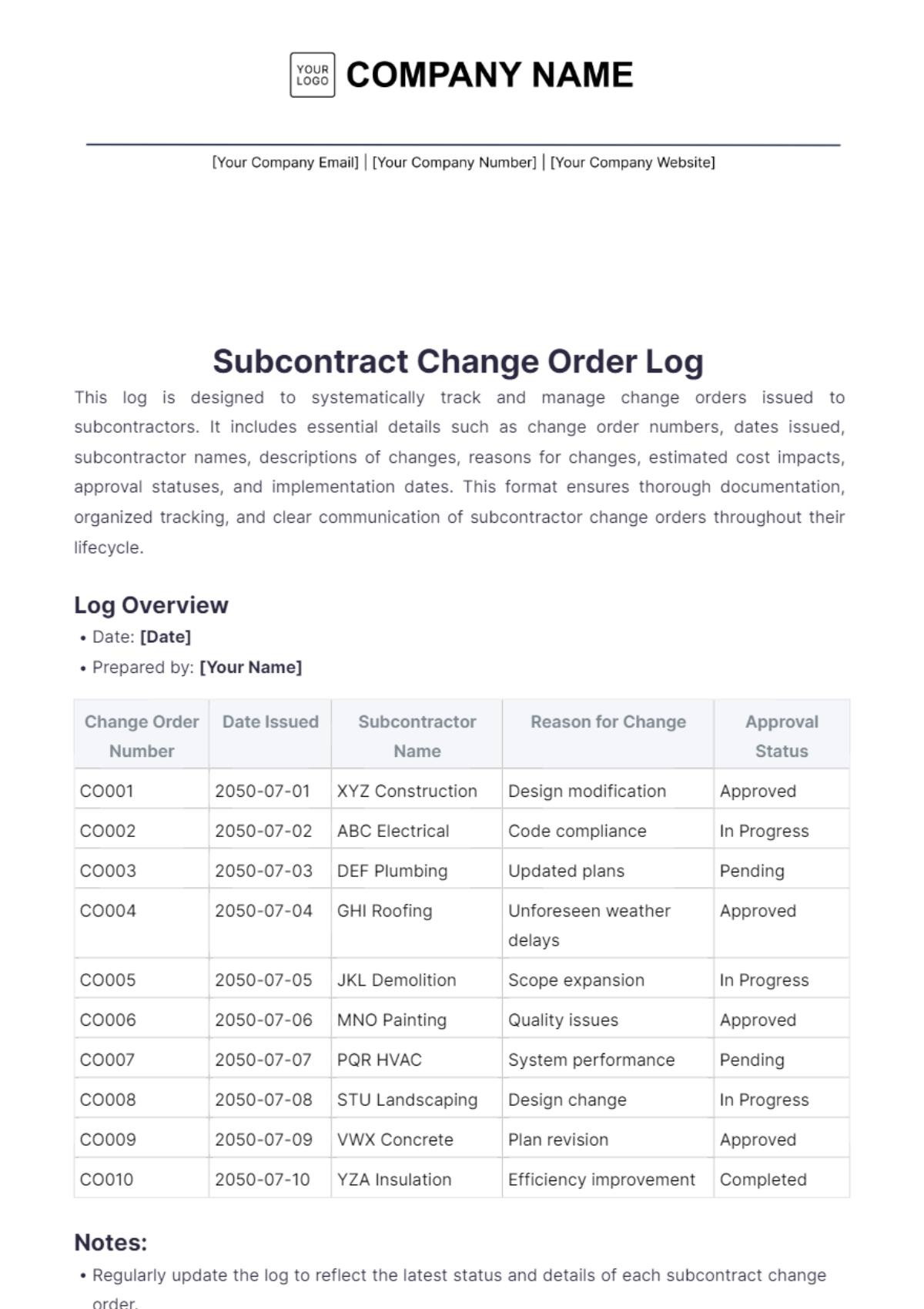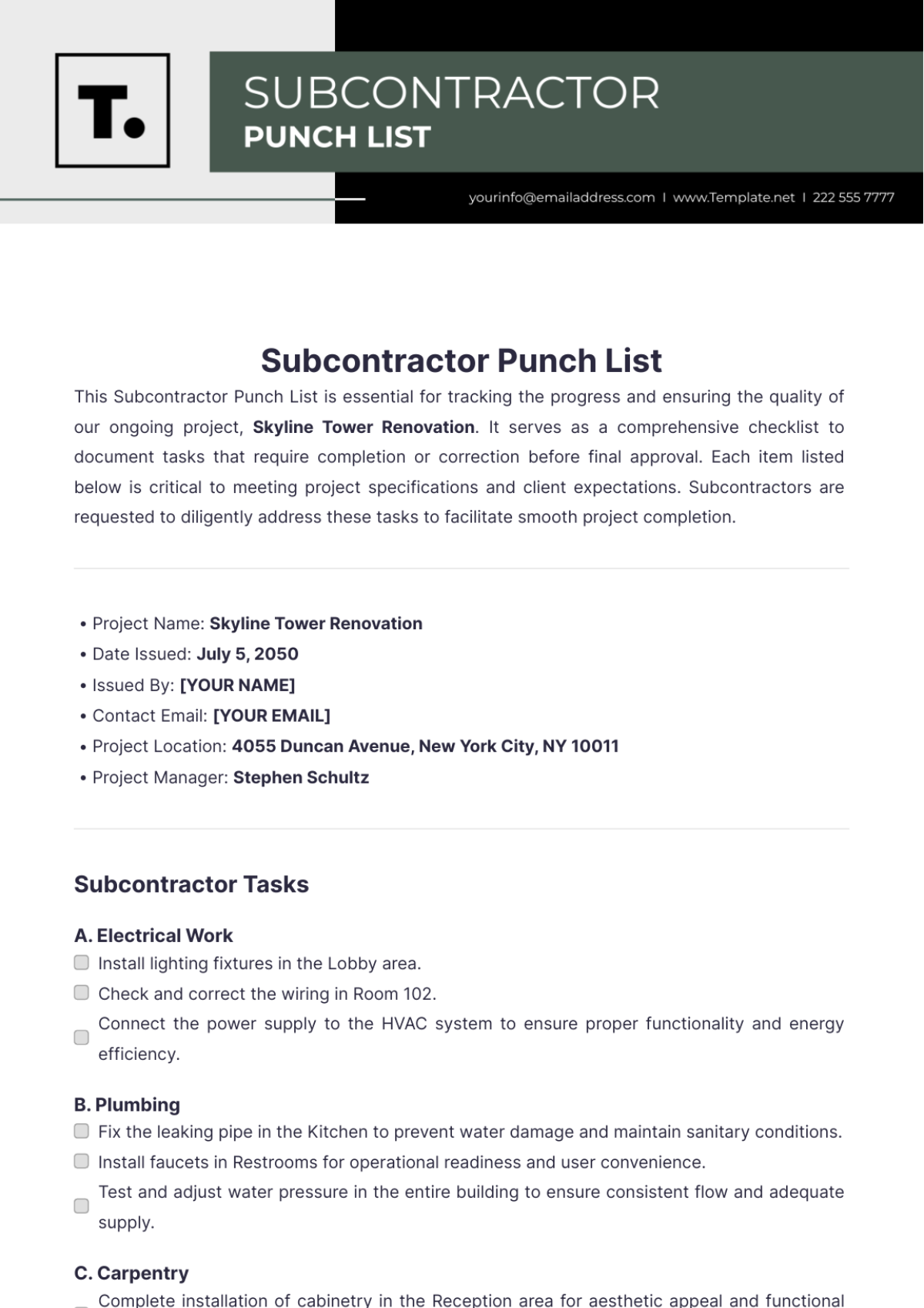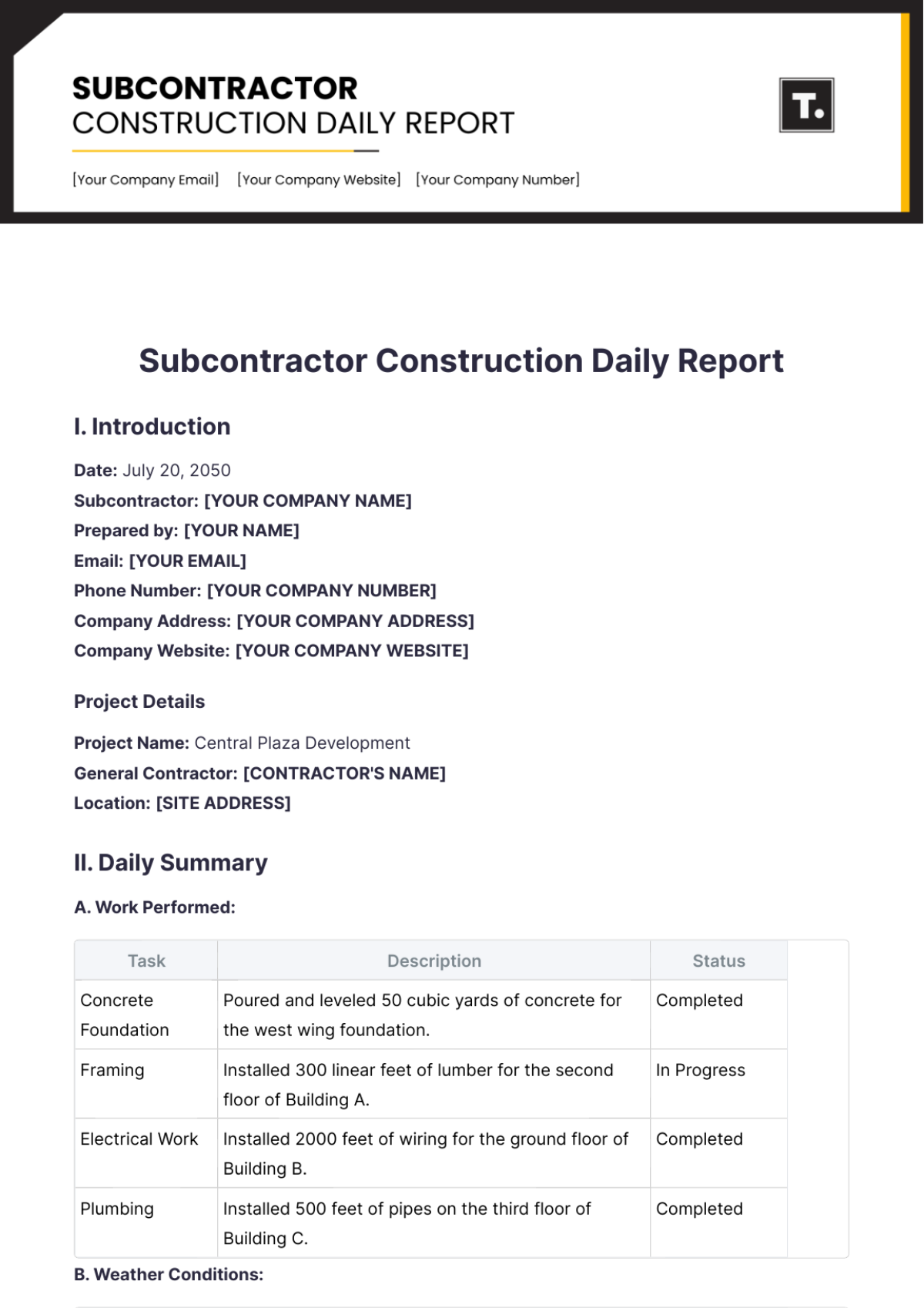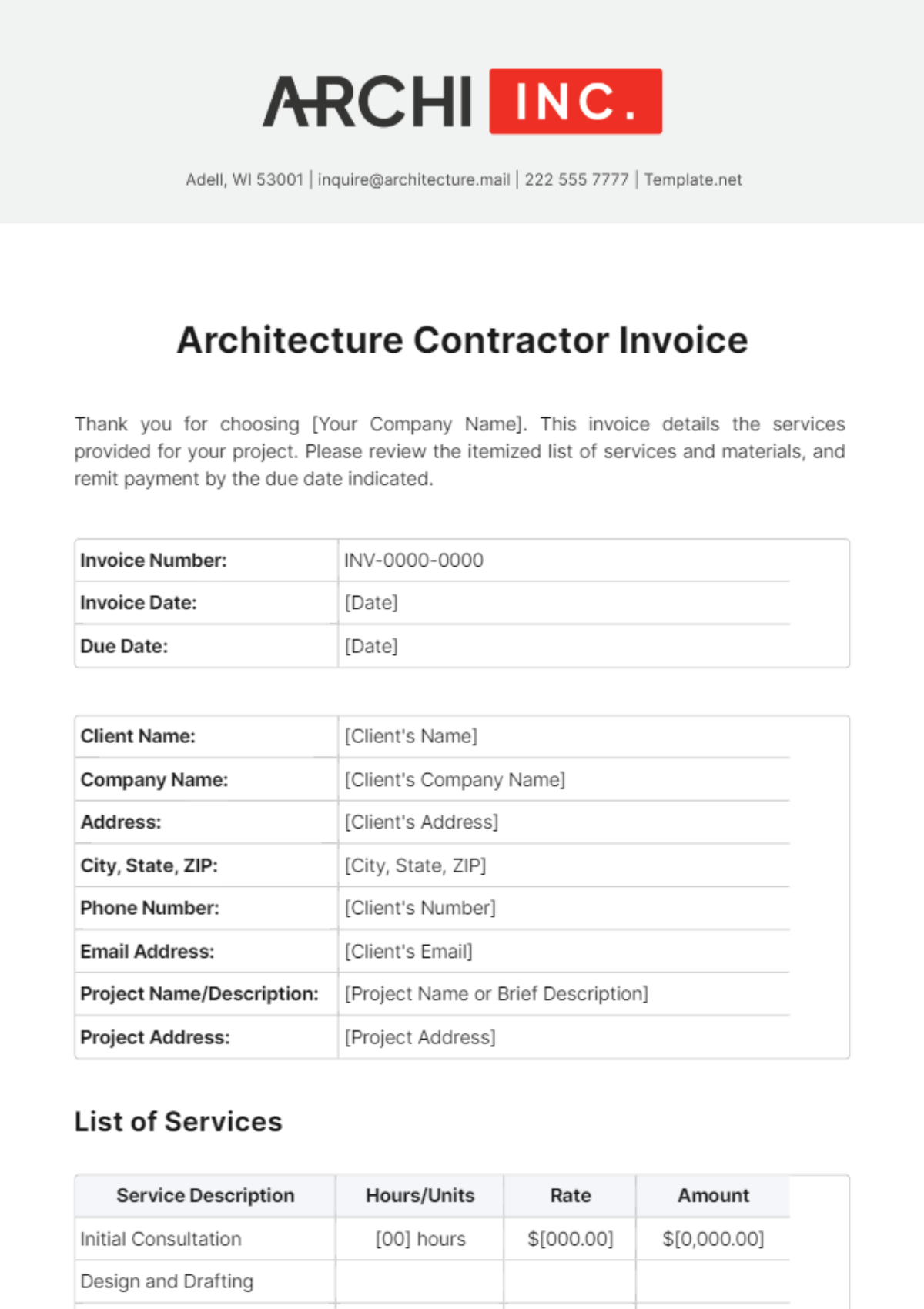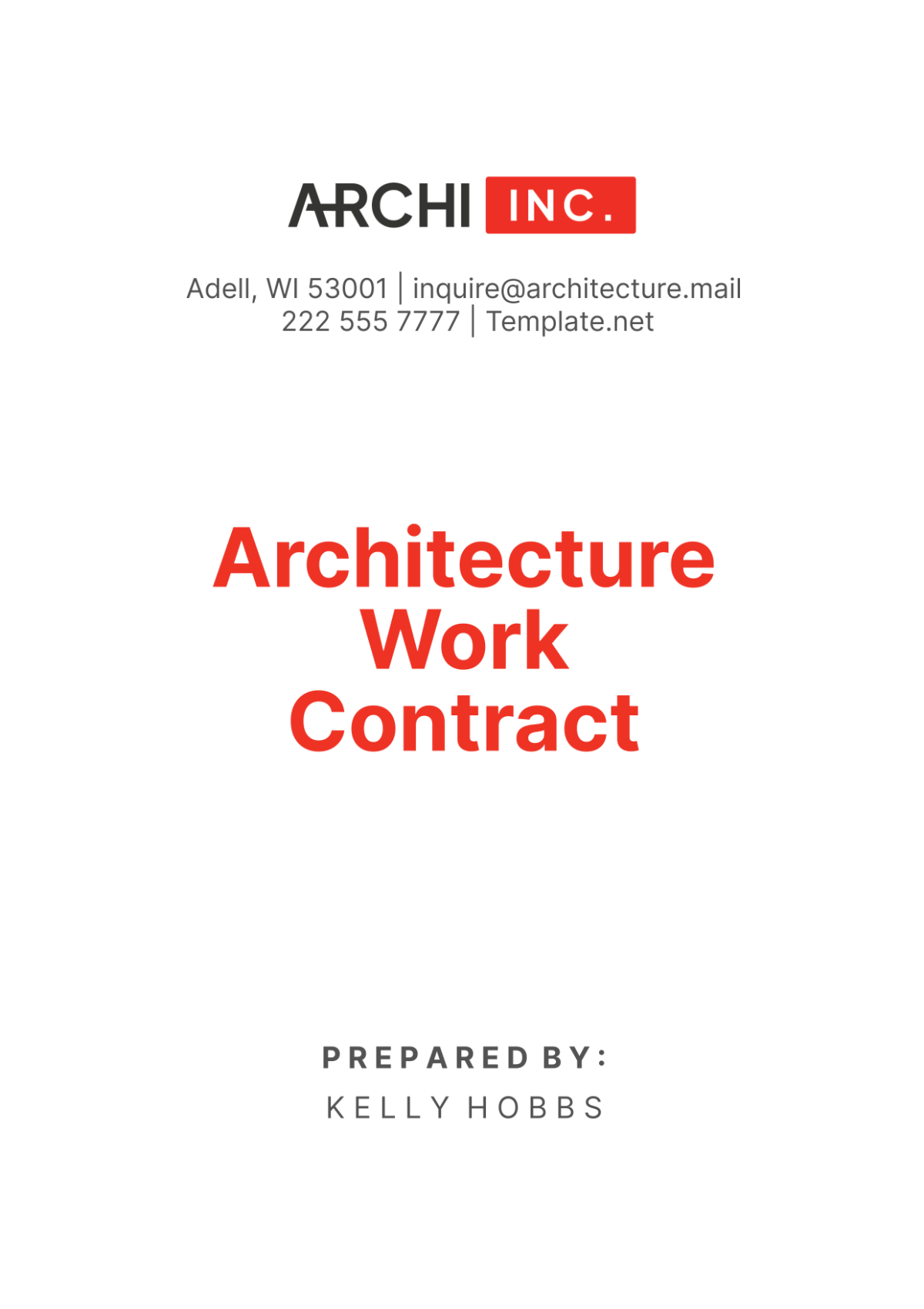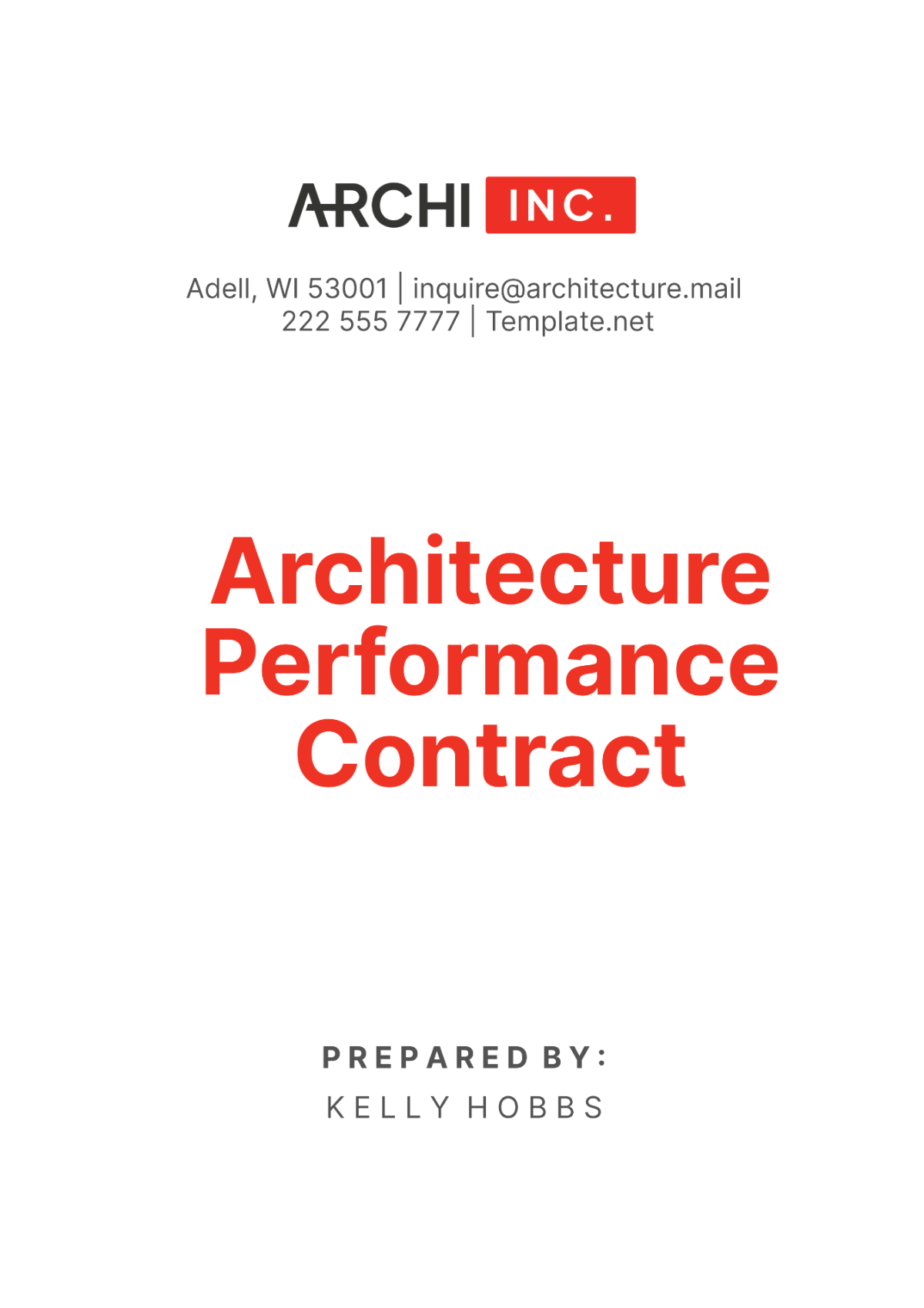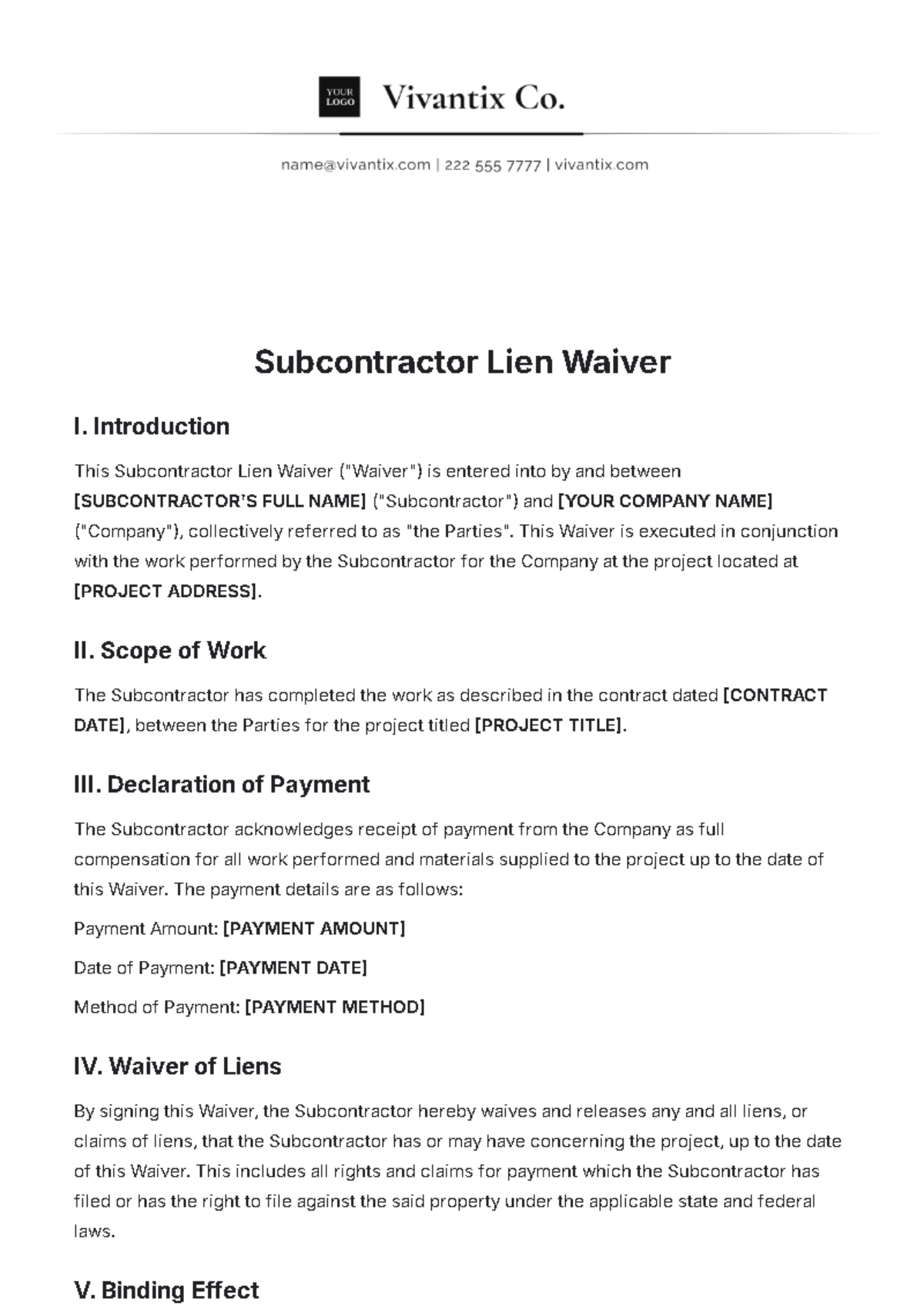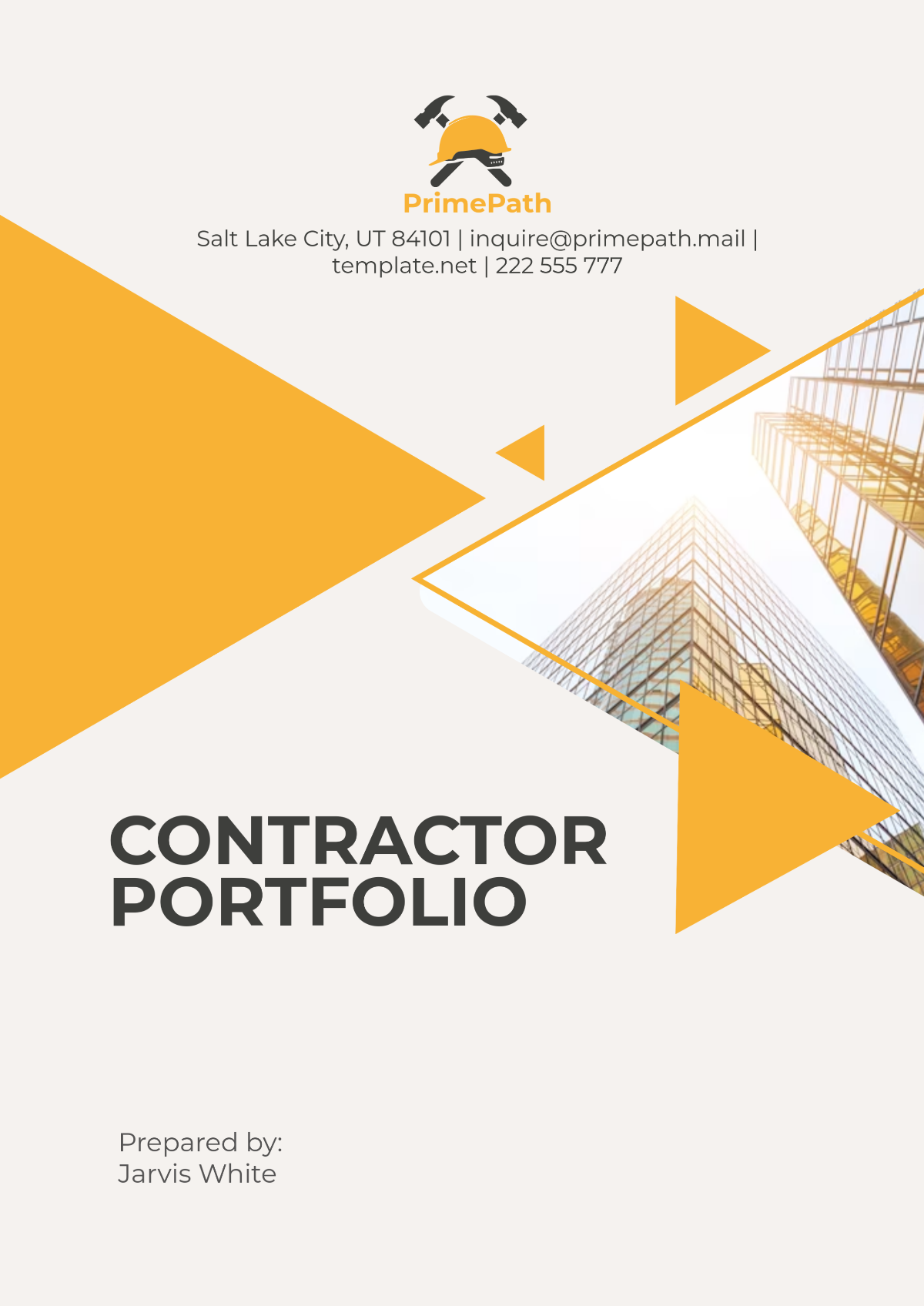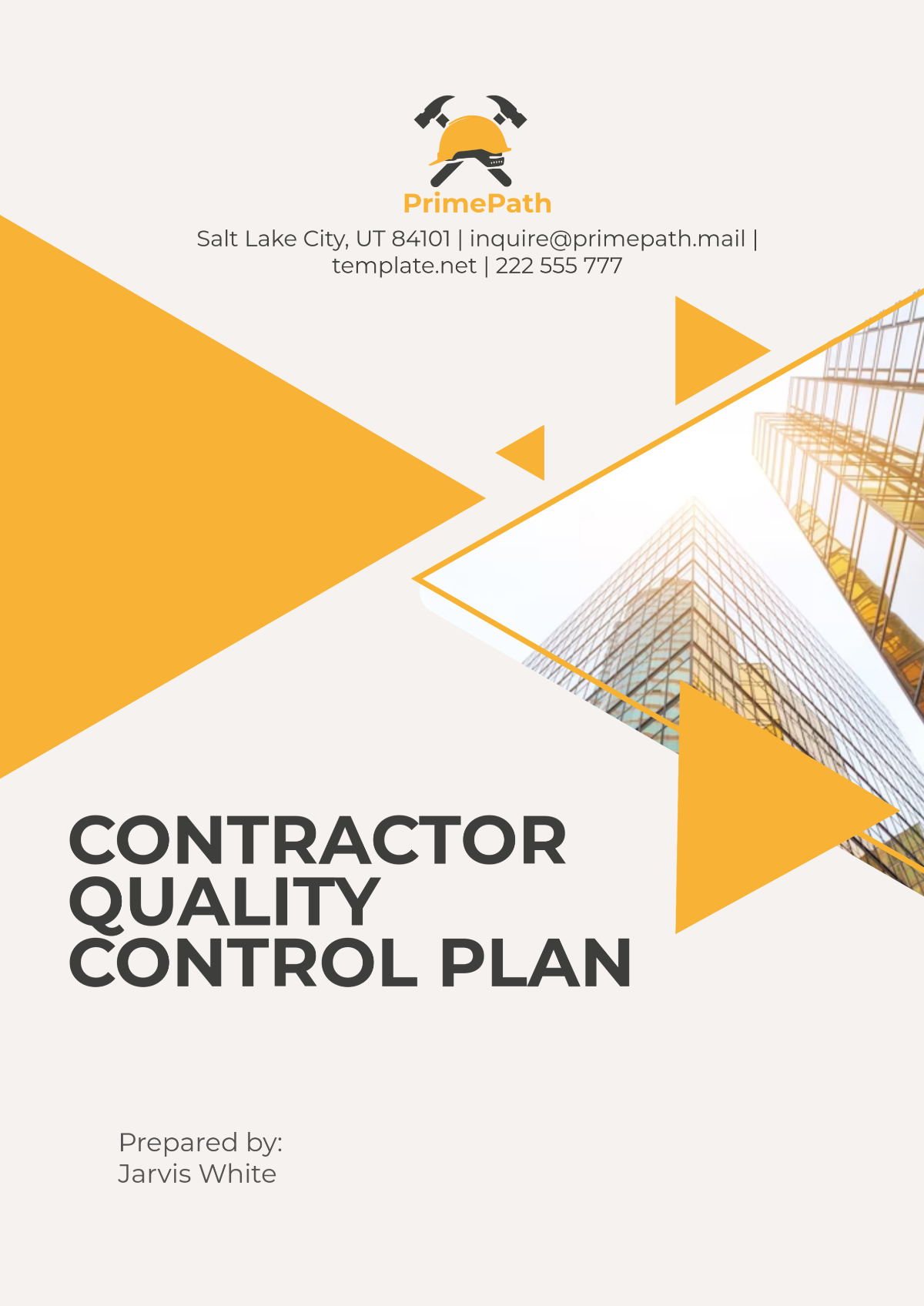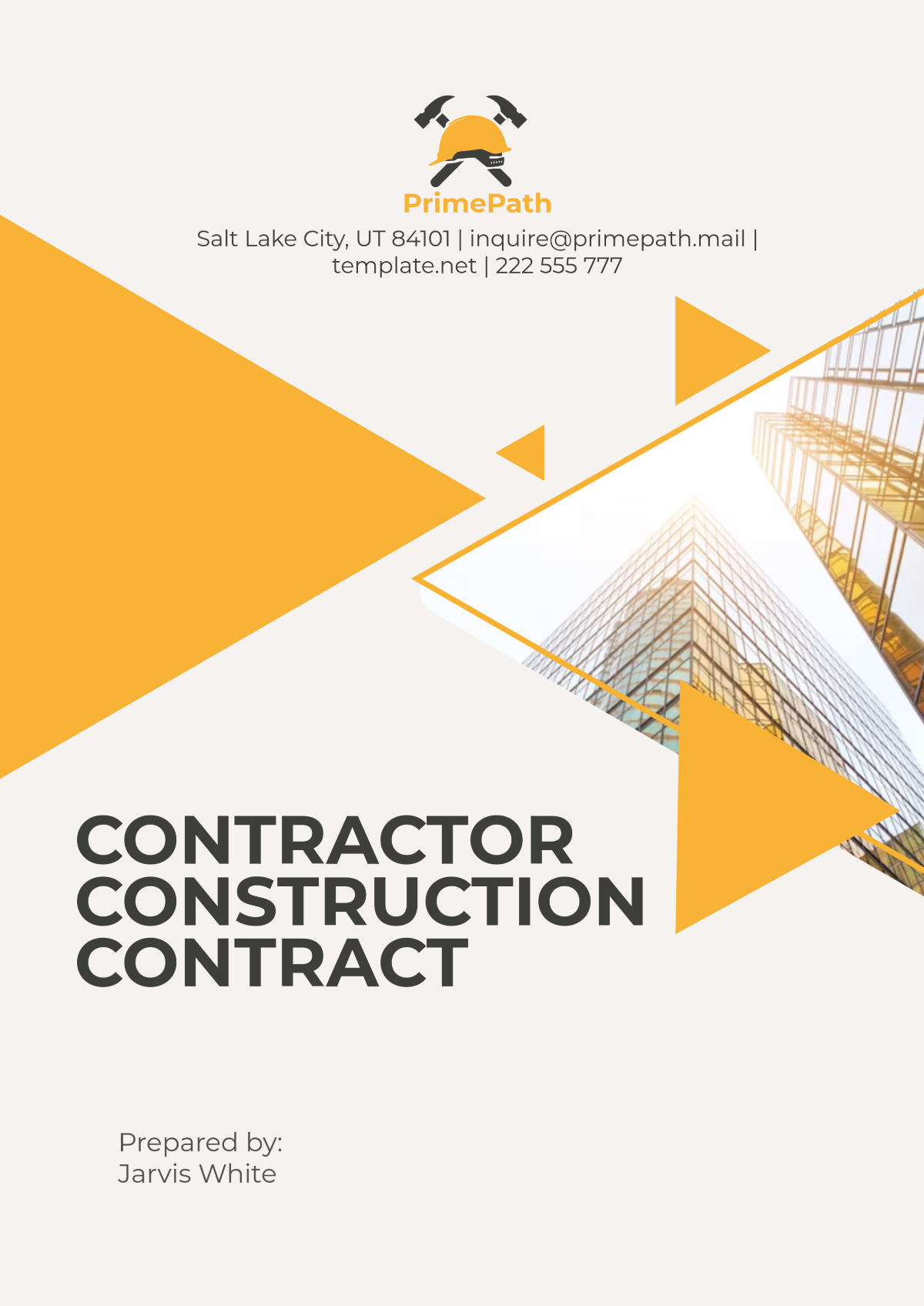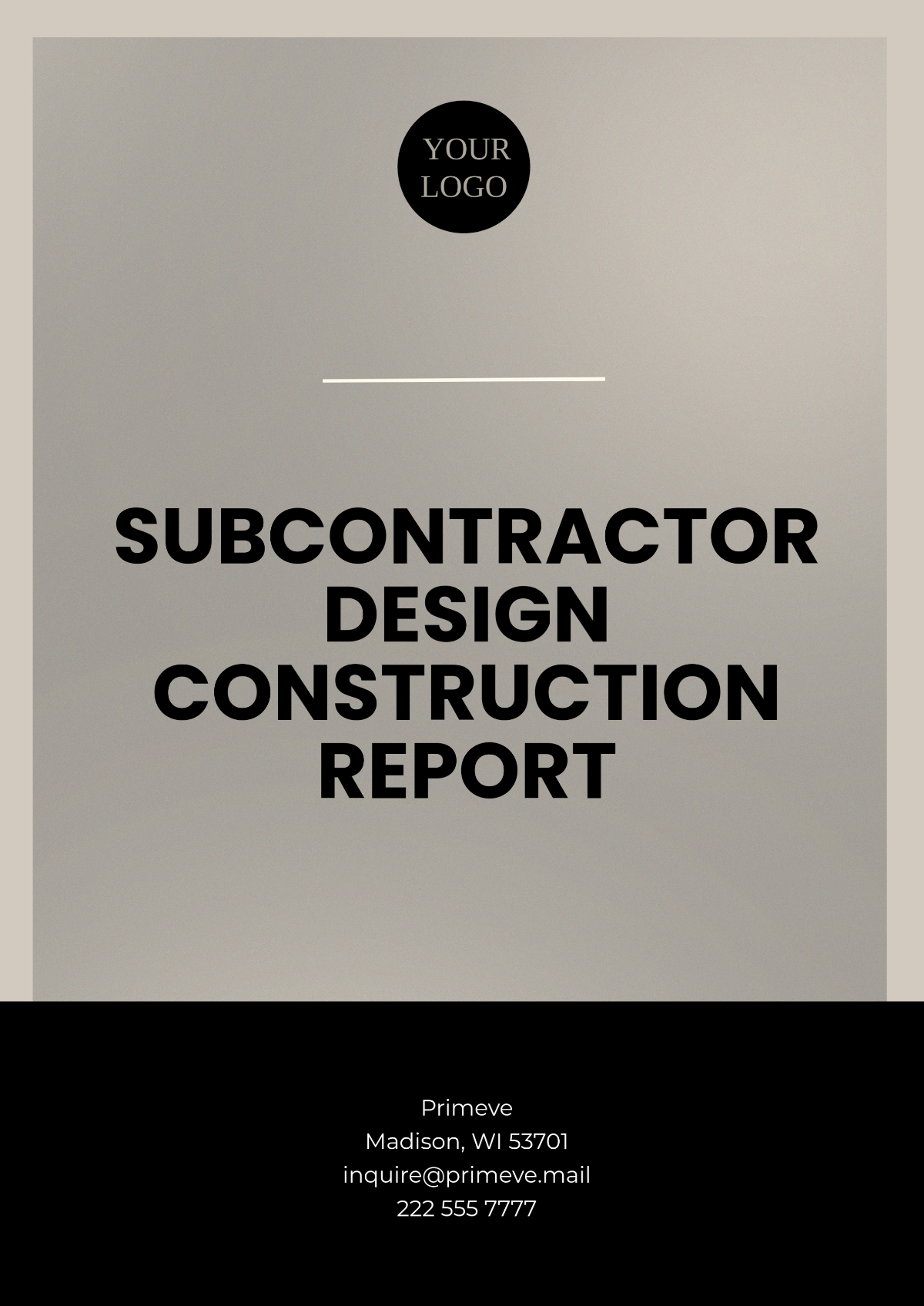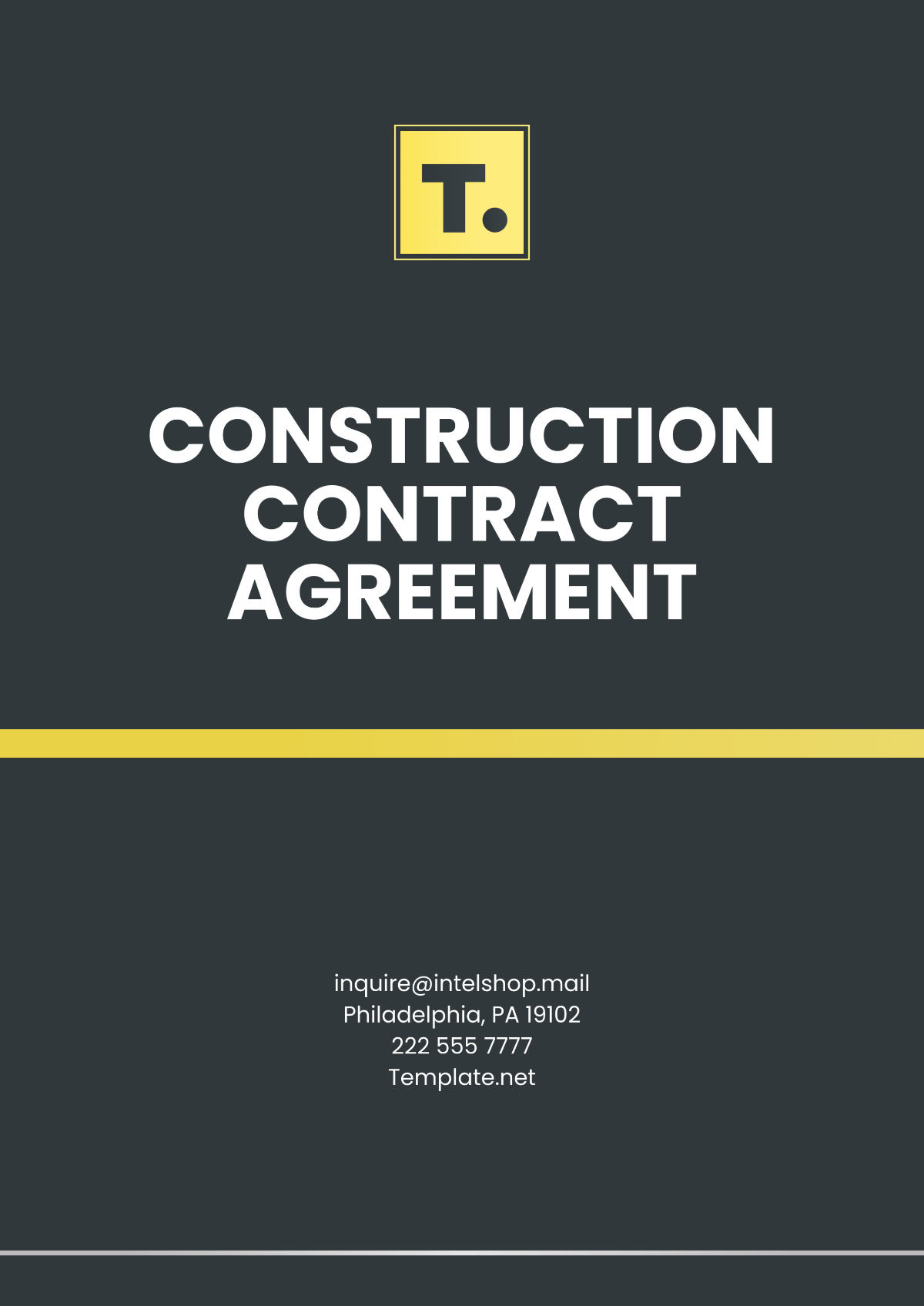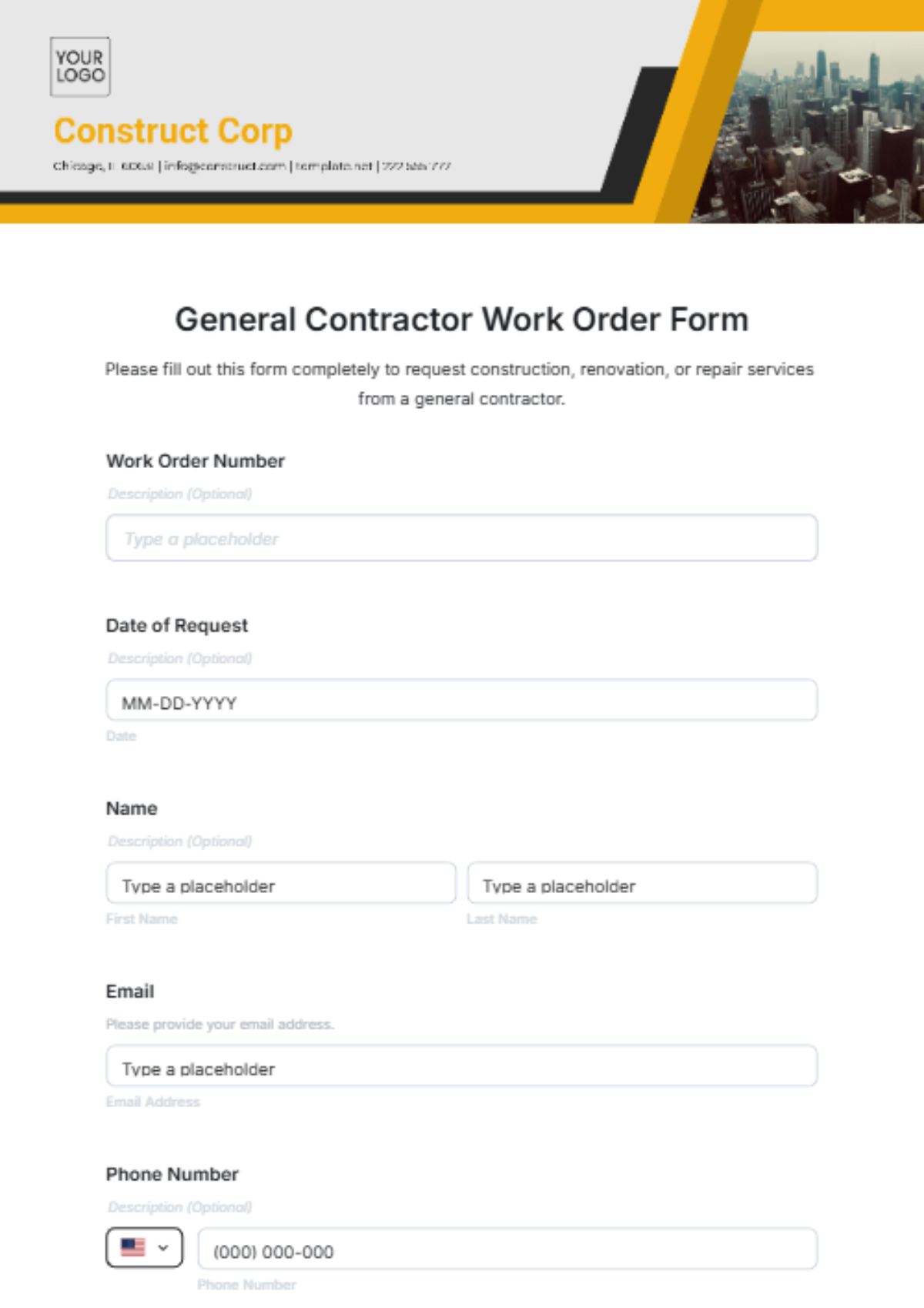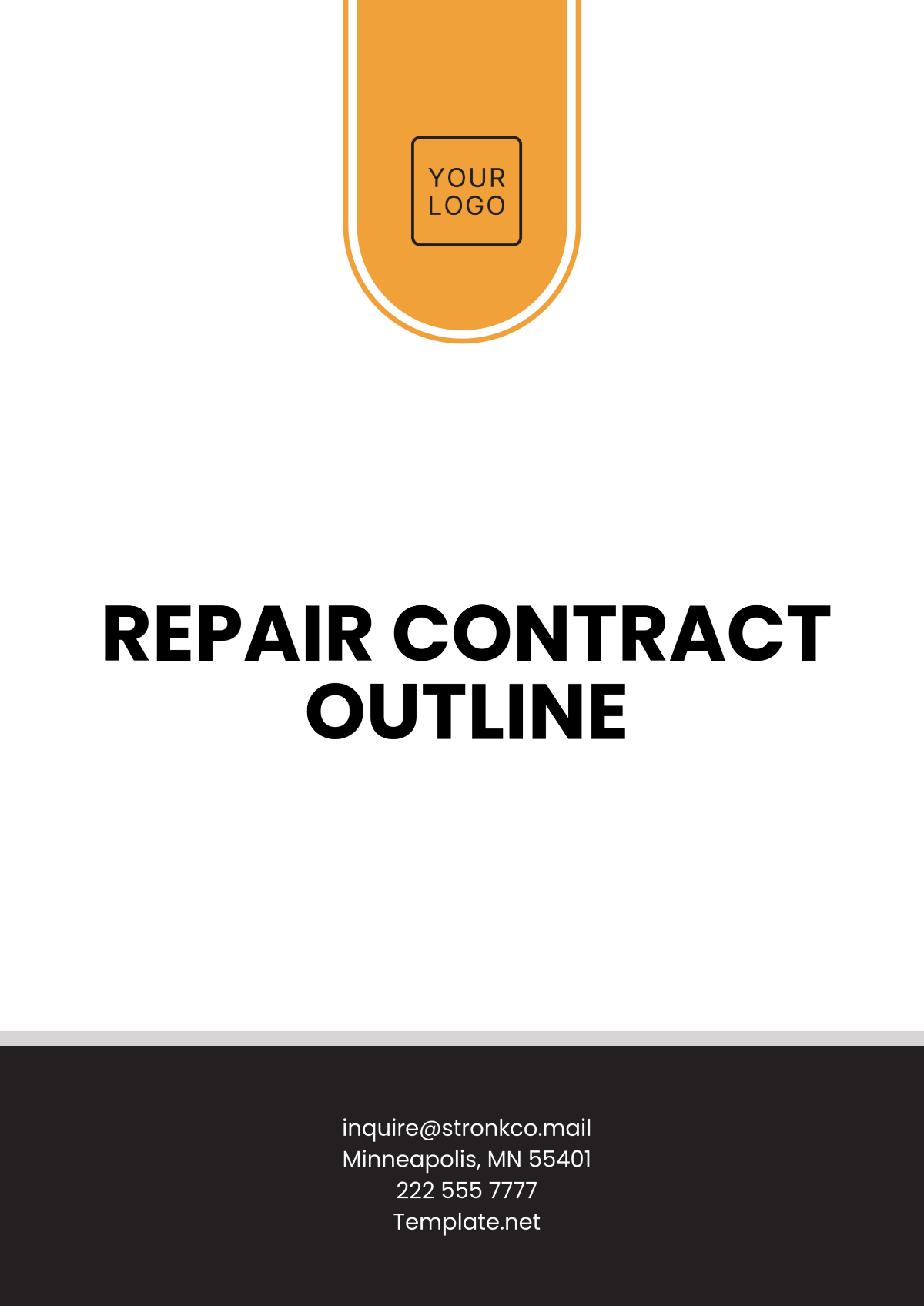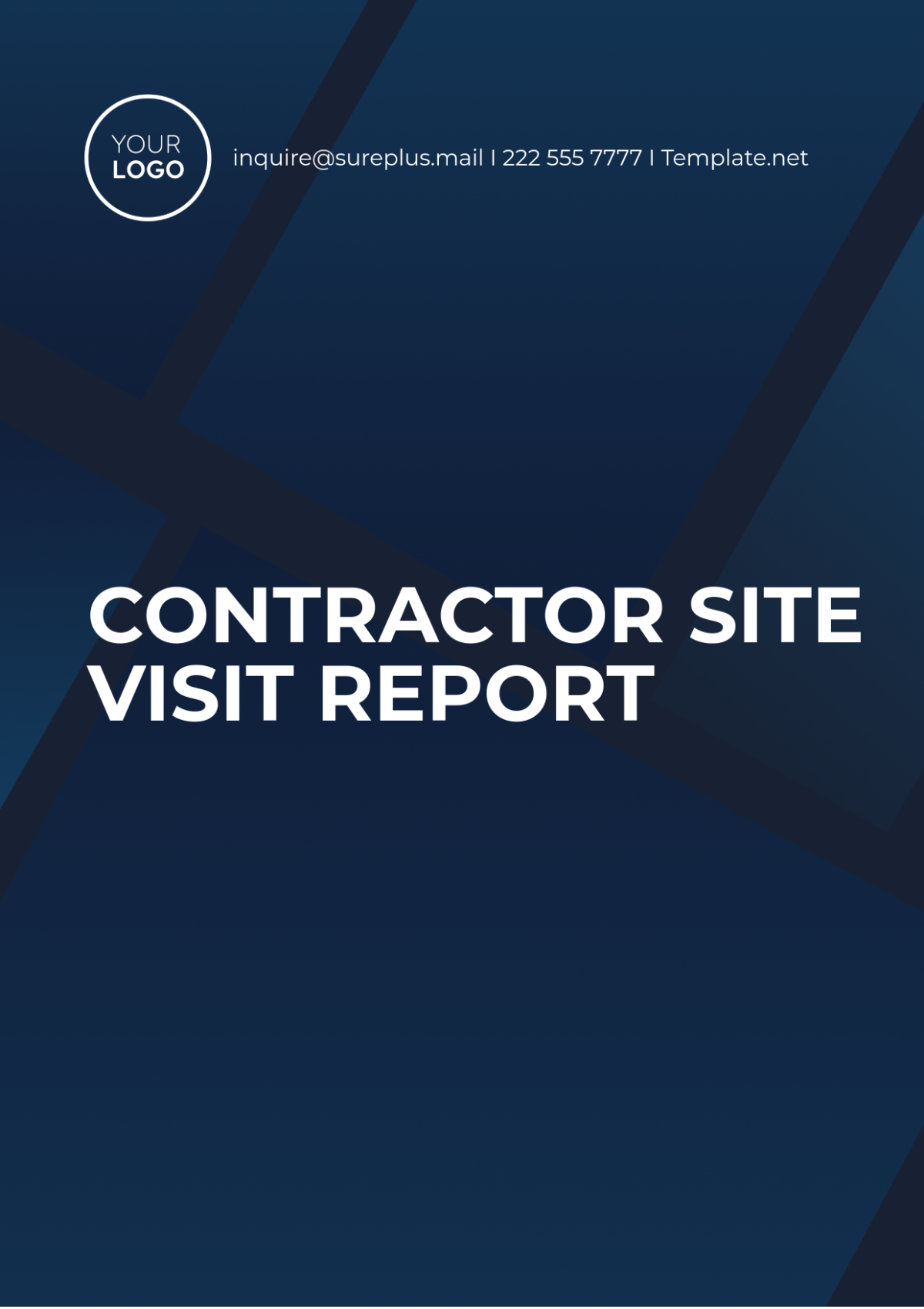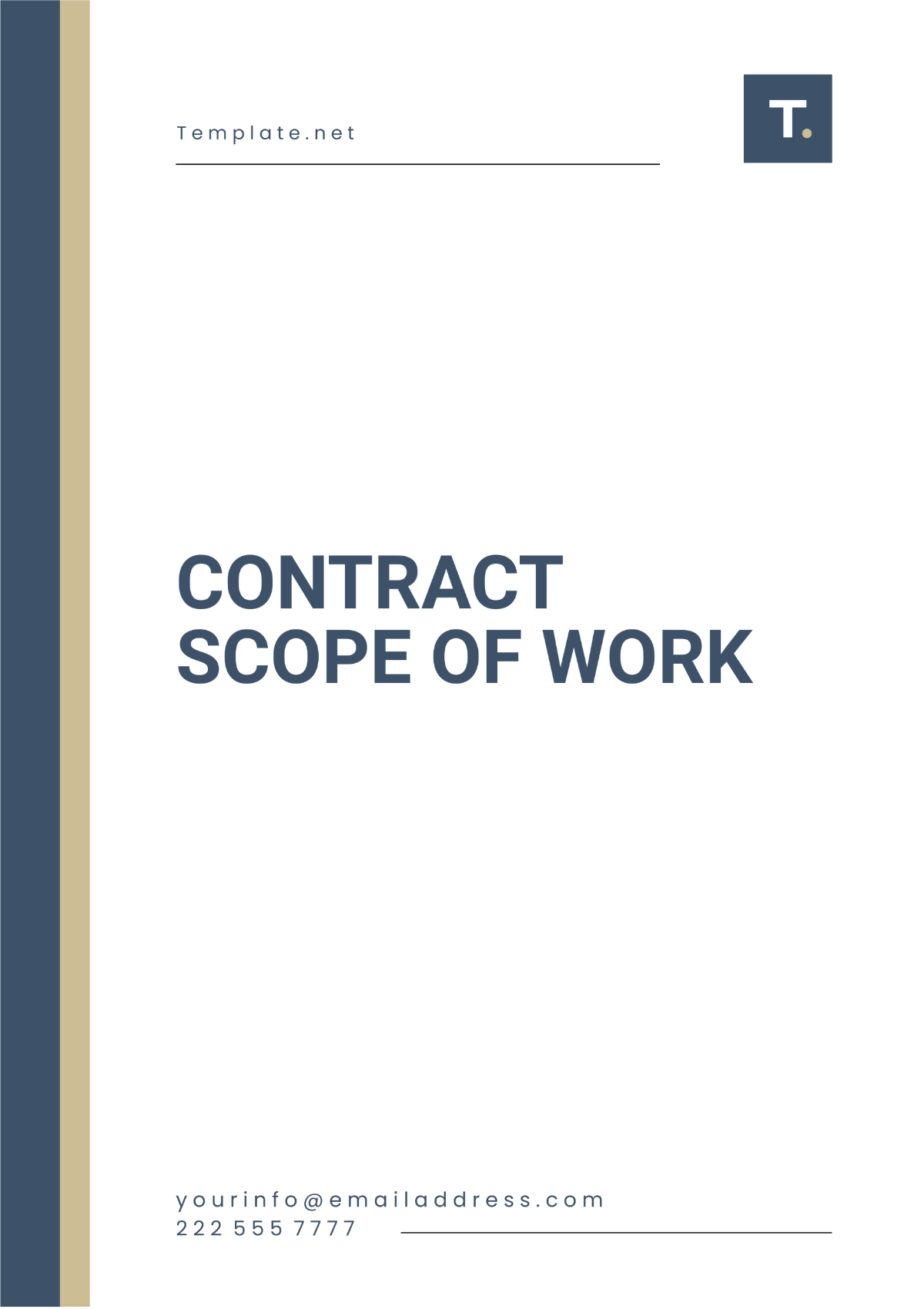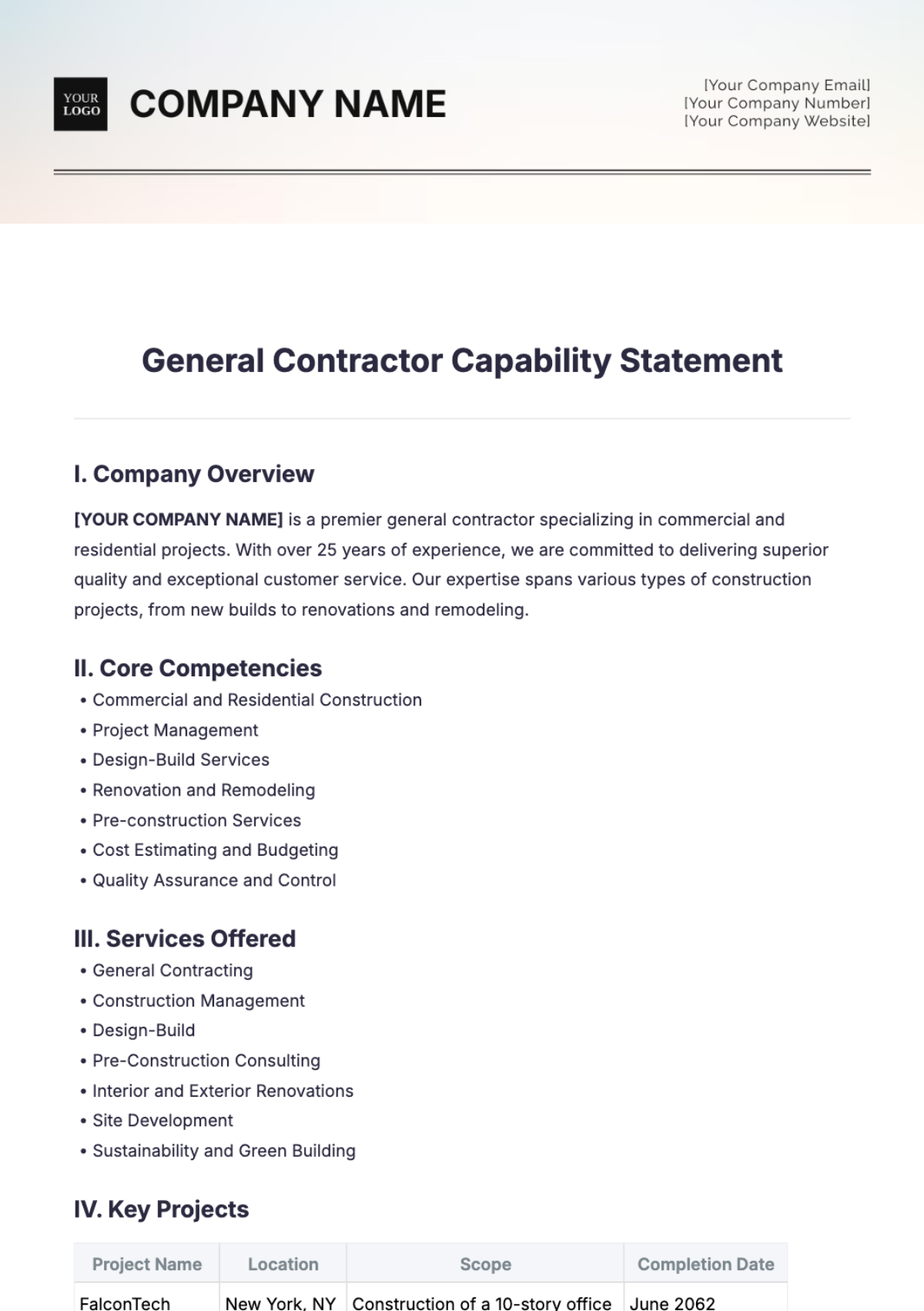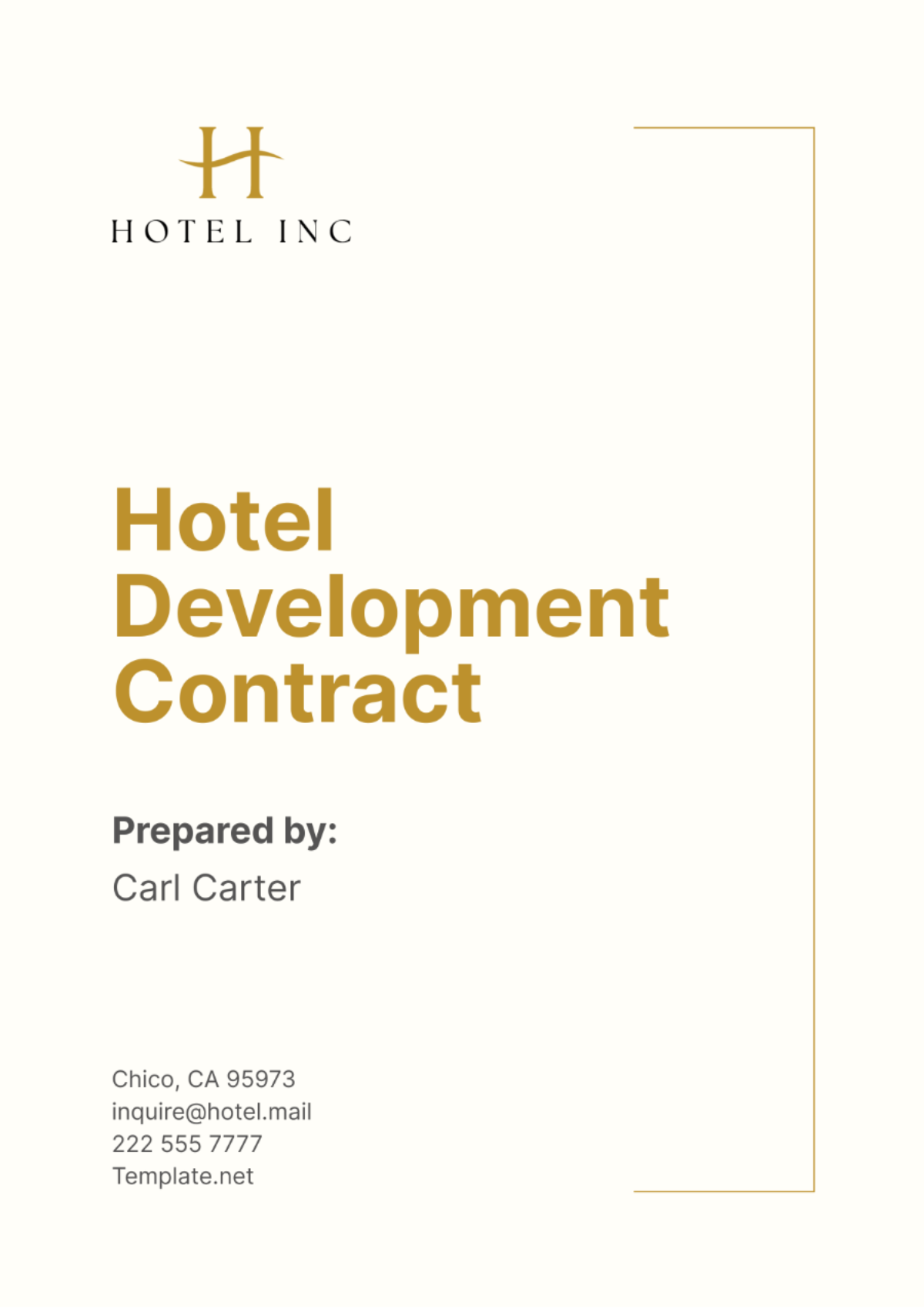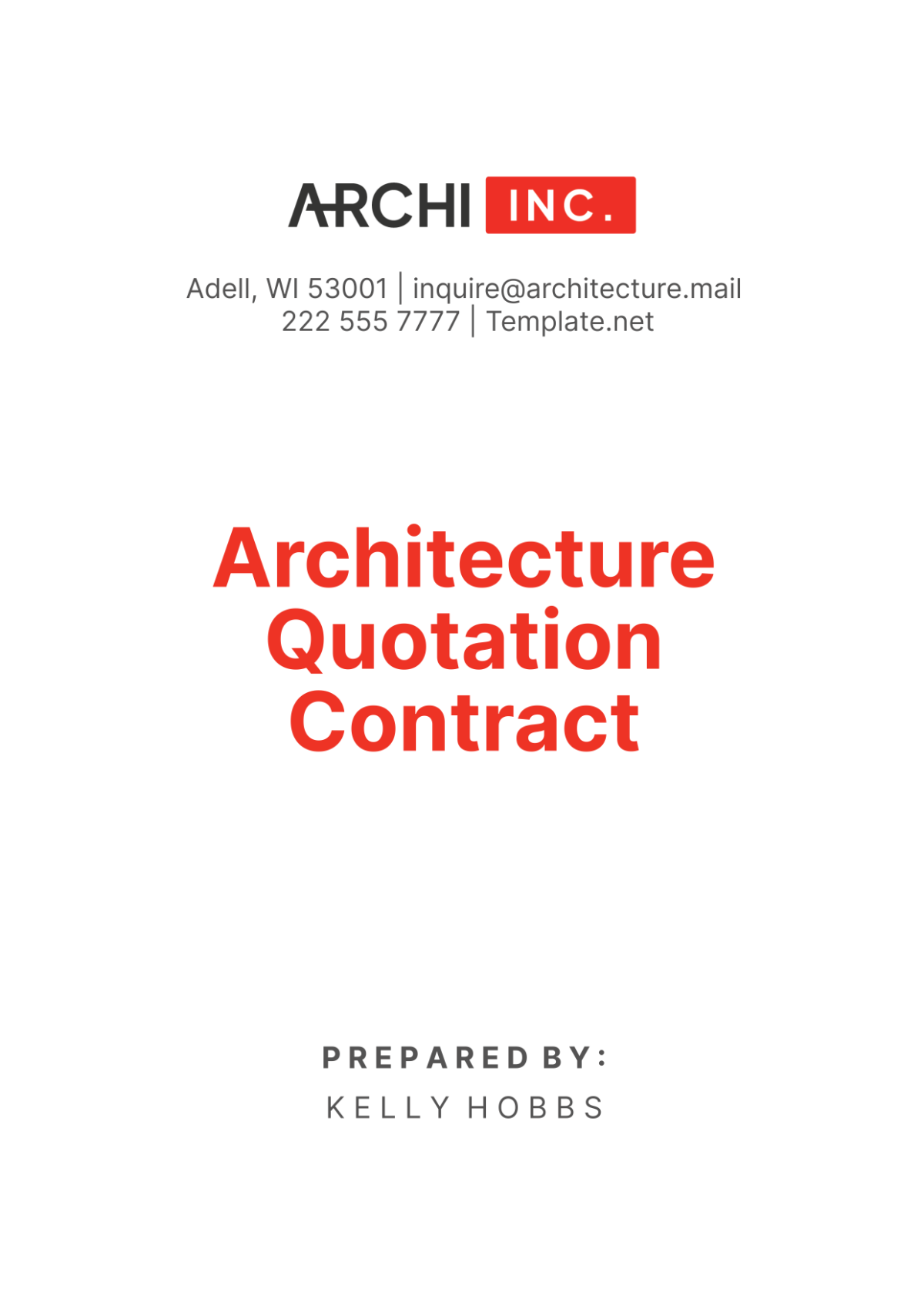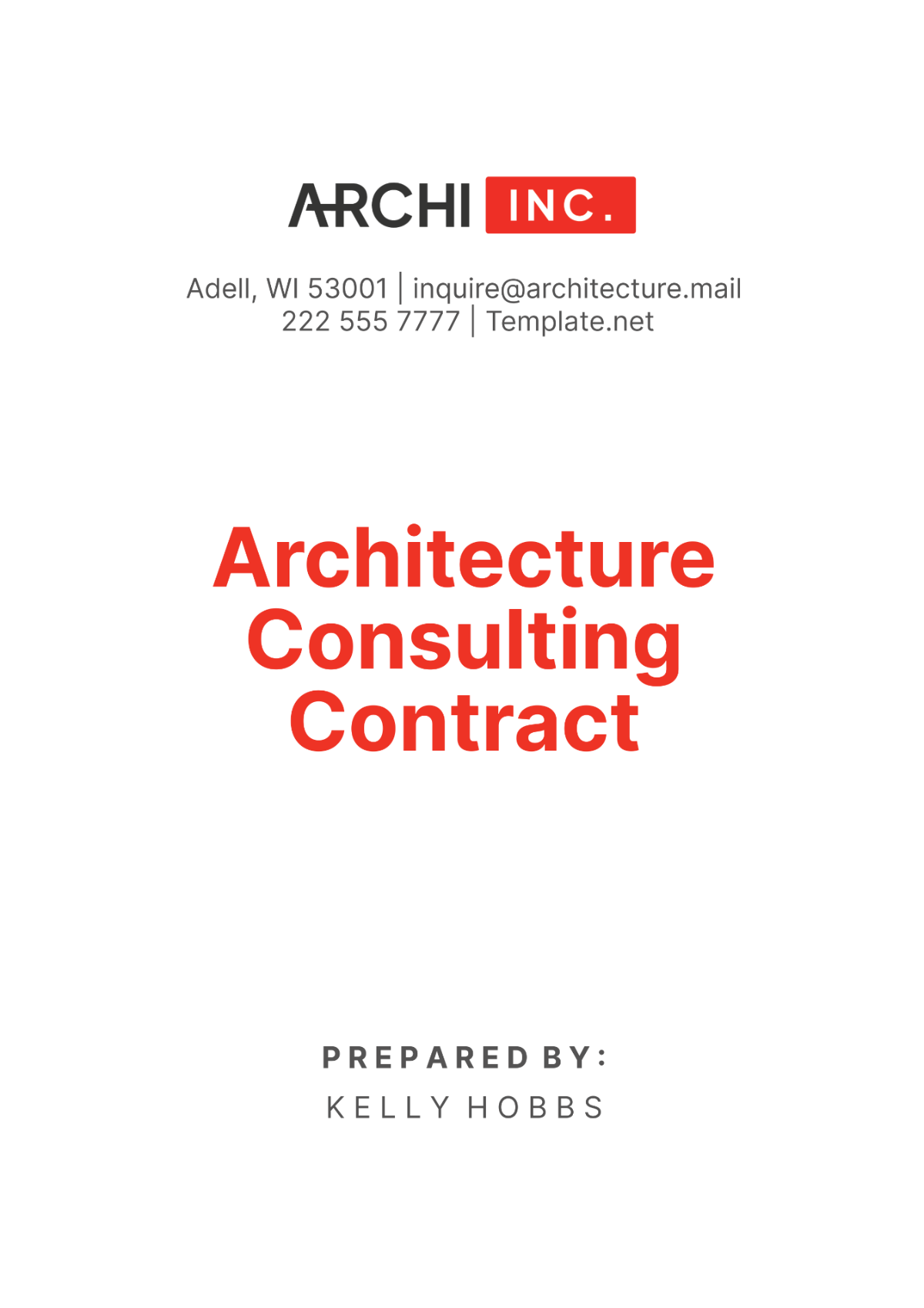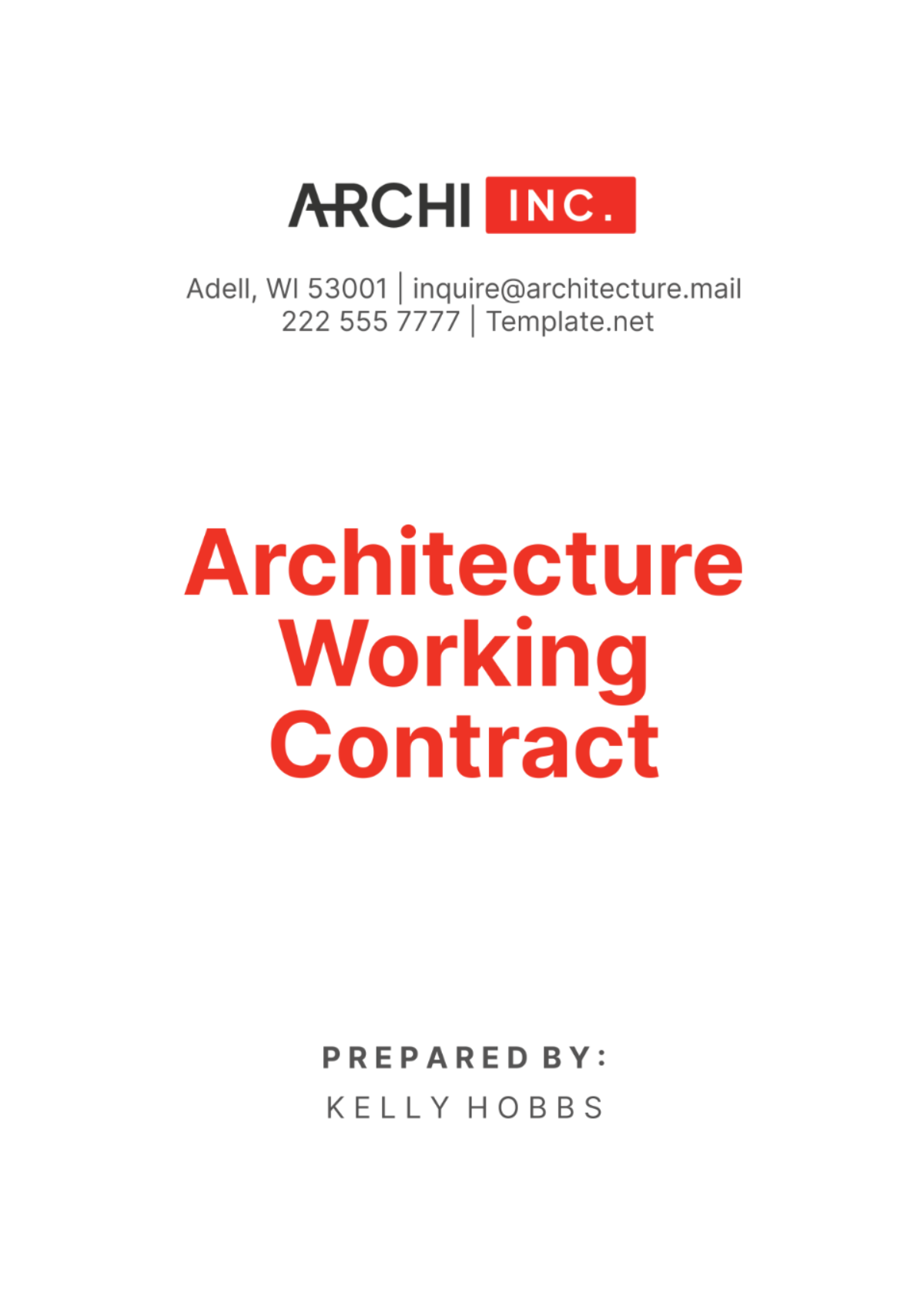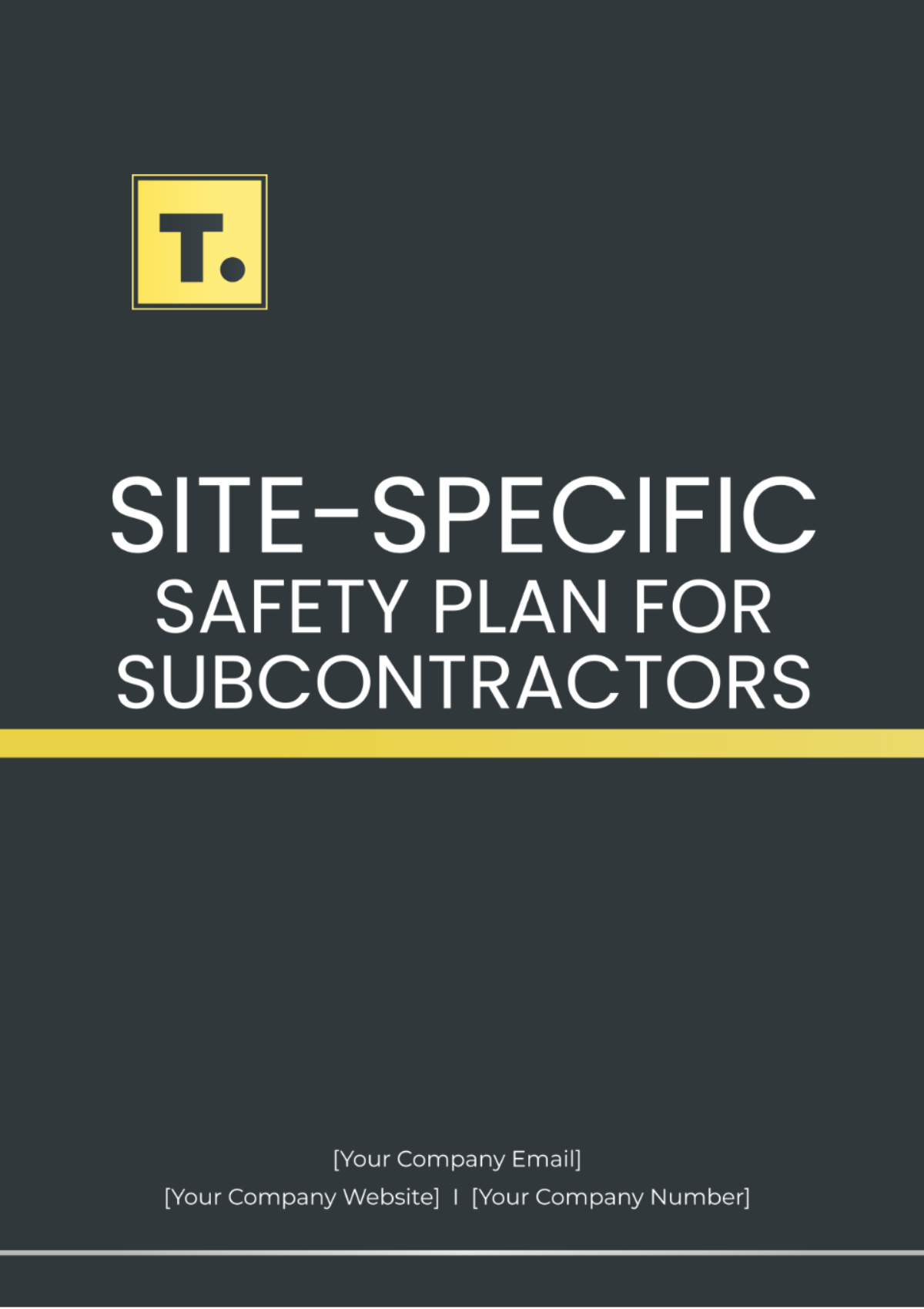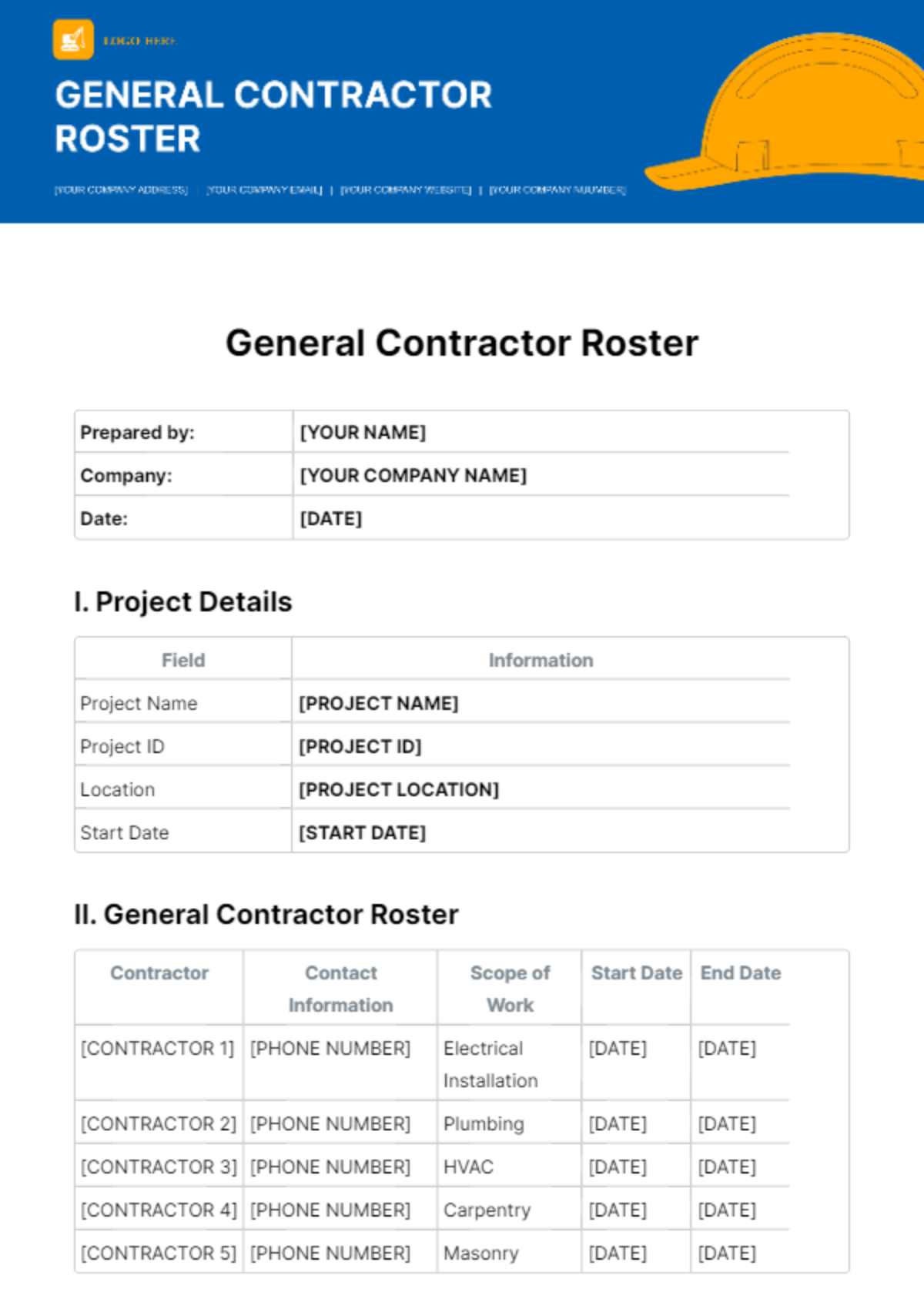Contractor Quality Control Plan
I. Introduction
A. Purpose of the Plan
The Contractor Quality Control Plan (CQCP) is a comprehensive document designed to define the processes, practices, and methodologies [Your Company Name] will use to ensure that all construction projects adhere to the highest quality standards. The primary purpose of this plan is to establish a uniform approach for the identification, prevention, and correction of quality issues throughout the lifecycle of the project. The CQCP also aims to ensure that the final product meets or exceeds all contractual requirements, legal regulations, and client specifications. The plan is critical in achieving consistent and repeatable outcomes in all construction activities, thereby enhancing client satisfaction, operational efficiency, and overall project success.
B. Scope of Work
This CQCP applies to all construction-related activities undertaken by [Your Company Name], both in new construction and renovation projects. This includes residential, commercial, industrial developments, and infrastructure projects, such as roads, bridges, utilities, and transportation systems. The plan covers all phases of the construction process, including planning, design, procurement, construction, testing, and final delivery. It also extends to any subcontracted services provided by third parties, such as electrical, plumbing, HVAC, and specialty trade services. Moreover, this plan applies to all project locations, ensuring that consistent quality standards are met across various work sites.
II. Organizational Structure
A. Quality Control Personnel
1. Roles and Responsibilities
To effectively manage the quality control process, [Your Company Name] employs a highly skilled and dedicated team of quality control professionals. The team is organized to cover different aspects of quality management and reporting. The key roles include:
Quality Control Manager (QCM): The QCM is responsible for overseeing the implementation and execution of the CQCP. This individual is tasked with ensuring that quality standards are maintained throughout the project by reviewing documentation, supervising the quality control team, and communicating with other key project stakeholders such as project managers, clients, and subcontractors. The QCM also leads quality meetings, identifies areas for improvement, and is the primary point of contact for any quality-related issues. For example, the QCM may regularly audit site operations to verify that construction activities align with established quality benchmarks.
Site Quality Inspectors: These individuals are responsible for performing on-site inspections, tests, and evaluations at critical stages of the construction process. They track the quality of materials, workmanship, and adherence to safety standards, ensuring that all elements of the project conform to the agreed-upon specifications. They prepare detailed inspection reports and alert the QCM of any issues found. For instance, during a concrete pour, a site inspector will check the mix ratios and temperature to ensure that the concrete meets project requirements.
Subcontractor Quality Liaison: A dedicated role to ensure that subcontractors follow quality standards and adhere to the specified contractual terms. This liaison is crucial in managing subcontractor performance, conducting quality checks, and ensuring proper documentation. For example, a subcontractor responsible for electrical installations will be monitored to ensure that all installations meet national electrical codes and pass required inspections.
Position | Responsibilities | Reporting Line |
|---|---|---|
Quality Control Manager | Oversee CQCP execution, review quality plans, communicate with stakeholders. | Reports to Project Manager |
Site Quality Inspectors | Conduct field inspections, maintain testing records, submit daily reports. | Reports to QCM |
Subcontractor Liaison | Verify subcontractor compliance with project quality specifications. | Reports to QCM |
B. Communication and Reporting
Effective communication between all team members is essential for maintaining a high standard of quality across all stages of construction. [Your Company Name] has developed a clear communication strategy that ensures timely reporting, regular meetings, and effective issue resolution. Communication protocols are as follows:
Weekly Quality Meetings: These meetings are held to review inspection findings, discuss any quality issues, and plan corrective actions. Representatives from the quality control team, project managers, subcontractors, and other relevant stakeholders participate in these discussions. The meetings provide an opportunity to align quality standards with client expectations and project timelines.
Daily Reports: Site quality inspectors are required to submit daily quality control reports detailing inspections, tests conducted, material deliveries, and any issues or deviations observed during the day’s activities. These reports provide real-time data for the project manager and the QCM to monitor the quality control process.
Monthly Progress Reports: The QCM prepares a detailed report at the end of each month, summarizing overall quality performance, highlighting any significant issues or risks, and providing recommendations for process improvements.
III. Quality Control Procedures
A. Pre-Construction Phase
1. Review of Project Specifications
Before any construction work begins, [Your Company Name] conducts an exhaustive review of the project specifications to ensure that all quality requirements are understood. This review includes:
Detailed Review of Blueprints: Architects and engineers verify that all blueprints align with the client’s vision and regulatory requirements. For example, if a project includes a commercial office building, the specifications will include structural calculations, materials to be used, and safety systems like fire alarms and sprinklers.
Compliance with Local Codes: The project specifications must adhere to local building codes, zoning regulations, environmental laws, and any special client requests. The quality control team is responsible for ensuring that all legal standards are incorporated into the project design.
Identifying Potential Risks: Early identification of potential quality risks allows [Your Company Name] to develop mitigation strategies. For instance, if a certain material used in the construction of a foundation is prone to corrosion, the plan will outline steps for inspecting and testing the material throughout the project lifecycle.
2. Selection of Subcontractors and Suppliers
Choosing qualified subcontractors and suppliers is crucial to maintaining the high-quality standards of the project. [Your Company Name] follows a stringent selection process, including:
Past Performance Reviews: Subcontractors and suppliers are assessed based on their past performance, including the quality of work, adherence to deadlines, and ability to meet budget requirements. For example, a subcontractor specializing in HVAC systems must have a history of completing projects on time and according to the specified quality standards.
Certifications and Licensing: Only subcontractors and suppliers who are properly certified, licensed, and compliant with industry standards are selected. For instance, a supplier of structural steel must provide certifications verifying that their materials meet ASTM specifications.
Capability Assessment: Subcontractors are evaluated for their ability to meet the scope of work and project timelines. If a subcontractor does not have the capacity to handle a large-scale project, an alternative supplier or subcontractor is considered.
B. Construction Phase
1. Inspection and Testing
Throughout the construction phase, [Your Company Name] implements an extensive inspection and testing program to ensure that all work meets project specifications. This includes:
Material Inspections: All materials delivered to the site are inspected for quality and compliance. For example, if cement is being delivered for a concrete pour, it is inspected for its strength and consistency.
In-Process Inspections: Regular inspections are conducted during the construction process to verify that work aligns with approved plans and specifications. This includes checking the quality of welding for steel reinforcements or ensuring that electrical wiring meets safety codes.
Final Inspections: Upon completion of each phase of construction, final inspections are conducted to ensure the work is finished to specification. These are usually conducted by the QCM in collaboration with the project manager.
2. Materials Management
Materials management is a key aspect of maintaining high quality throughout the construction process. [Your Company Name] ensures that materials are stored correctly and are used efficiently. This includes:
Proper Storage: Materials such as cement, steel, and other construction products are stored in conditions that prevent damage or deterioration. For instance, cement bags are stored off the ground to prevent moisture contamination.
Tracking and Documentation: Each material received on-site is tracked using a materials log, which includes the batch number, supplier information, delivery date, and inspection status. This ensures traceability and accountability.
3. Documentation
Accurate and timely documentation is essential for tracking quality control activities. Key documentation includes:
Inspection and Test Reports: Each inspection and test conducted is documented in a report that details the results and any corrective actions taken.
Material Certifications: For every batch of materials used, certification documents are provided to verify that they meet the required specifications. For example, steel used in a building’s structural frame must be accompanied by a certification from the manufacturer confirming its compliance with industry standards.
Quality Control Logs: The quality control team maintains a log of all activities related to inspections, testing, and audits, providing a clear record of quality control activities throughout the project.
IV. Training and Certification Programs
A. Training Requirements
Training is an integral part of maintaining high quality standards throughout the construction process. [Your Company Name] ensures that all personnel involved in the project are thoroughly trained in quality control procedures, safety protocols, and compliance requirements. Training is not limited to just the quality control team but extends to all employees, subcontractors, and suppliers who play a role in the construction process.
Orientation for New Employees: Every new employee, including subcontractors, undergoes a comprehensive orientation program. This program includes an introduction to the company’s quality control standards, a review of project-specific requirements, and an overview of safety protocols. For example, a new construction worker will learn about the specific safety equipment required for the job, as well as the steps to ensure the work is done according to [Your Company Name]'s standards.
Quality Control Training Modules: All quality control inspectors and project management staff complete in-depth training on quality assurance methodologies and standards. This includes training on the use of inspection tools, proper documentation practices, and non-conformance reporting procedures. For instance, inspectors are trained to identify structural defects early, ensuring that rectifications are made before they lead to larger, costlier issues.
Ongoing Training Programs: To keep the workforce updated with evolving industry standards, [Your Company Name] offers ongoing training sessions on new construction technologies, updated building codes, and emerging quality control techniques. Workers attend workshops, seminars, and online training programs hosted by industry leaders, ensuring they remain at the forefront of the construction industry.
B. Certification Standards
[Your Company Name] mandates that all employees involved in quality control and construction management hold the necessary certifications required by industry standards. These certifications validate the expertise and competence of the workforce in upholding quality assurance processes.
ISO 9001 Certification: All quality control managers and inspectors are required to have certification in ISO 9001, a globally recognized standard for quality management systems. This certification ensures that employees understand the importance of continuous improvement and can apply best practices in quality management. For example, an ISO 9001-certified inspector will be able to design quality assurance processes that streamline inspections and prevent errors.
Occupational Safety and Health Certifications (OSHA): Safety is paramount on any construction site. All workers involved in the project, including site supervisors and subcontractors, must complete OSHA certification programs to understand safety standards and prevent accidents. Certifications such as OSHA 30-Hour for construction workers and OSHA 10-Hour for general laborers ensure that all workers are well-prepared to identify and mitigate workplace hazards.
Specialized Certifications for Subcontractors: Subcontractors, especially those involved in highly technical areas such as electrical or mechanical installations, must possess relevant certifications. For example, electricians need to hold licenses issued by recognized regulatory bodies, such as the National Electrical Contractors Association (NECA), to ensure compliance with the latest codes and regulations.
V. Corrective Action Plan
A. Non-Conformance Identification
One of the primary functions of the quality control system is the identification of non-conformances—issues where the work or materials do not meet the established standards. Non-conformances can arise at any stage of the project, and it is crucial that they are identified promptly to avoid delays or additional costs. [Your Company Name] employs a robust system for the identification and management of non-conformances, including:
Routine Inspections and Audits: As part of the quality control plan, inspections and audits are carried out at critical points during construction. This includes inspections during material delivery, installation, and at key stages of construction, such as framing or foundation work. If the quality of materials or workmanship is found to be subpar, it is flagged as a non-conformance. For instance, if the steel reinforcement bars delivered to the site are found to be below the required tensile strength, this would constitute a non-conformance.
Client or Third-Party Reports: Clients, consultants, or third-party inspectors may also raise concerns that lead to the identification of non-conformances. For example, if a client reports an issue with the alignment of a building’s exterior walls, the quality control team would review the issue and determine whether it constitutes a non-conformance.
Employee Feedback: Workers on-site are also encouraged to report any discrepancies or concerns related to quality. This creates a proactive quality culture where issues are addressed before they escalate.
B. Corrective Measures and Follow-Up
Once a non-conformance is identified, it is critical that corrective actions are taken to address the issue, prevent recurrence, and ensure that the project stays on track. [Your Company Name] follows a defined corrective action process that includes:
Immediate Rectification: For critical non-conformances that pose a risk to the project, immediate rectification is undertaken. For example, if a foundation pour does not meet the required concrete strength, the affected section may need to be removed and replaced before proceeding with further construction.
Root Cause Analysis: For each non-conformance, a root cause analysis is conducted to identify the underlying reasons for the issue. For example, if a subcontractor consistently delivers materials that do not meet specifications, an investigation may reveal that the supplier’s quality control procedures are inadequate. This would lead to corrective actions such as changing suppliers or improving the subcontractor’s oversight process.
Preventive Measures: Once the root cause has been identified, preventive measures are implemented to ensure the issue does not recur. This could include additional training, changing a supplier, or improving inspection processes. For example, if an inspector missed an issue during an early stage inspection, the company might implement more frequent checks or introduce more detailed inspection protocols.
Follow-Up and Verification: After corrective actions are taken, follow-up inspections are conducted to verify that the issue has been resolved. A detailed report is prepared documenting the corrective actions taken and the results of the follow-up inspections.
Non-Conformance Type | Response Time | Corrective Action | Follow-Up Frequency |
|---|---|---|---|
Major structural flaw | 24 hours | Immediate rectification (e.g., foundation replacement) | Weekly |
Minor procedural issue | 72 hours | Retraining and process review | Monthly |
Safety violation | Immediate | Corrective action and disciplinary action | Ongoing |
VI. Documentation and Records Management
A. Reporting Requirements
Clear and concise documentation is essential to maintaining an organized and accountable quality control system. [Your Company Name] has set up detailed reporting requirements to capture all relevant quality-related activities, ensuring that every step of the process is tracked and auditable.
Daily Inspection Reports: Site quality inspectors are required to submit daily inspection reports, which include observations, tests conducted, and material inspections. These reports also capture any issues or deviations from the original plan and describe actions taken to address these concerns. For example, if a discrepancy is found in the dimensions of a wall, the daily report will document the issue and corrective measures undertaken.
Weekly Quality Control Summary: Every week, the QCM prepares a summary of the quality control activities, highlighting major issues, resolutions, and actions taken. This report is shared with project managers, the client, and other key stakeholders to ensure that everyone is informed of the project's quality status.
Final Inspection Reports: After the completion of each project phase, a final inspection report is created, summarizing the findings of the final inspection. This report includes documentation of any remaining defects, a list of items to be corrected before the final handover, and a certification that the work complies with all project requirements.
B. Record Retention Policies
[Your Company Name] adheres to a strict record retention policy to ensure that quality control records are available for review and audit, even years after the project’s completion. Key documents, such as inspection reports, test results, and corrective action logs, are retained for a minimum of [10] years from project completion. This is in line with industry best practices and legal requirements for record retention.
Digital Archives: All quality control documentation is stored in a secure digital archive system, making it easy to retrieve records as needed. For example, if a client needs to review testing logs from the construction of a building, the QCM can easily access the digital archives to provide the required information.
Paper Records: While the majority of documentation is stored digitally, hard copies of certain critical documents, such as final inspection certificates or non-conformance reports, are stored in a secure location for the duration of the retention period.
VII. Quality Control Audit and Continuous Improvement
A. Internal Audits
Internal audits are a crucial component of maintaining the integrity of the quality control process at [Your Company Name]. These audits assess the effectiveness of the quality control plan and ensure compliance with internal standards, project specifications, and regulatory requirements. They also help identify areas for improvement and provide an opportunity for proactive problem-solving.
Scheduled Audits: Internal audits are planned at regular intervals throughout the project’s lifecycle. The frequency of these audits depends on the size and complexity of the project, but typically, [Your Company Name] conducts audits at least once per month during the construction phase. These audits assess whether all quality control procedures are being followed, such as inspection schedules, documentation practices, and the handling of non-conformances. For example, an internal audit may involve reviewing the daily inspection logs to ensure that inspectors are conducting thorough checks and documenting results properly.
Spot Checks: In addition to scheduled audits, random spot checks are performed by the quality control team. These checks focus on specific aspects of construction, such as material quality or safety compliance, to verify adherence to quality standards. A random audit of the materials storage area, for example, could reveal whether materials are being stored under the correct conditions to prevent degradation or contamination.
Audit Reports: After completing each audit, an audit report is prepared to summarize findings, highlight areas of non-compliance, and recommend corrective actions. These reports are shared with the project management team, and any discrepancies or deficiencies are addressed immediately. For example, if an audit reveals that certain safety checks are being skipped, immediate corrective actions are taken, such as conducting refresher training for workers or revising safety protocols.
Audit Type | Frequency | Focus Area | Follow-Up Actions |
|---|---|---|---|
Scheduled Audit | Monthly | Overall quality control system compliance | Corrective actions based on findings and report review |
Spot Check | Random (Bi-weekly) | Specific quality aspects (e.g., material storage, safety) | Immediate corrective actions if issues are found |
Final Project Audit | At project completion | Final quality assessment and compliance check | Certification of final compliance with project requirements |
B. External Audits
External audits are conducted by independent third parties to provide an unbiased evaluation of [Your Company Name]'s quality control system. These audits are typically performed by clients, regulatory bodies, or industry certification organizations.
Client Audits: Clients often request external audits to ensure that the project meets the agreed-upon standards and specifications. These audits give clients assurance that [Your Company Name] is upholding quality standards and performing to expectations. For instance, if a government agency is commissioning a large infrastructure project, they may request regular external audits to ensure compliance with government regulations.
Regulatory Audits: Regulatory agencies may also conduct audits to verify that [Your Company Name] is complying with industry codes and standards. This is particularly important for projects involving public safety, such as bridges or hospitals, where regulatory bodies may require third-party audits to confirm compliance with environmental, safety, and construction codes.
Industry Certification Audits: [Your Company Name] may also undergo audits by industry certification bodies (such as ISO, ANSI, or others) to maintain its certification status. These external audits evaluate the company’s adherence to industry best practices and ensure continuous improvement within the quality control system. For example, if [Your Company Name] is seeking to maintain its ISO 9001 certification, an external auditor will review the quality control processes and assess whether they align with the latest international standards.
VIII. Safety and Environmental Compliance
A. Safety Protocols
Safety is a top priority for [Your Company Name]. Ensuring a safe working environment is critical to the success of any construction project, and the company adheres to stringent safety protocols to protect all employees, subcontractors, and visitors on-site. These safety protocols are integrated into the quality control plan to ensure that safety considerations are always a priority.
Site Safety Inspections: Regular safety inspections are conducted to assess potential hazards on-site and ensure compliance with Occupational Safety and Health Administration (OSHA) guidelines. These inspections focus on areas such as scaffold integrity, equipment safety, and personal protective equipment (PPE) use. For example, if scaffolding is found to be unstable, immediate corrective actions, such as stabilizing the structure, are taken to avoid accidents.
Safety Training: All personnel, including subcontractors, are required to undergo safety training before starting work on-site. Training includes general construction safety, hazard recognition, emergency response procedures, and the proper use of PPE. For instance, workers involved in demolition may undergo specific training on how to handle hazardous materials like asbestos or lead.
Incident Reporting: In the event of an accident or near-miss, an incident report is immediately filed, and an investigation is launched to determine the cause of the incident. The findings from the investigation are used to implement corrective measures to prevent similar incidents in the future.
Safety Protocols | Description |
|---|---|
Daily Safety Briefings | All workers are required to attend a safety briefing at the beginning of each workday to review hazards and safety measures. |
Safety Inspections | Regular inspections are conducted to identify and mitigate any safety risks on-site. |
Accident and Near-Miss Reporting | Any incident, no matter how minor, is reported and investigated to prevent recurrence. |
B. Environmental Standards
In addition to safety, [Your Company Name] places a strong emphasis on environmental responsibility. The company is committed to minimizing the environmental impact of its construction activities, ensuring that the project complies with all local, state, and federal environmental regulations.
Environmental Impact Assessments: Before the start of each project, an environmental impact assessment (EIA) is conducted to evaluate potential environmental risks and develop strategies for mitigating those risks. For example, a construction project near a protected wetland would require a comprehensive review of how the project may affect local flora and fauna. The EIA would include measures such as preserving the integrity of the wetland, controlling runoff, and limiting disturbance to wildlife habitats.
Waste Management: A sustainable waste management program is implemented to reduce, reuse, and recycle materials. Waste segregation bins are placed on-site for recyclable materials such as metals, plastics, and paper. Hazardous materials, like chemicals or solvents, are properly stored and disposed of according to environmental regulations. For example, paint cans with leftover paint are safely disposed of by a certified hazardous waste contractor to avoid contamination of soil or water.
Water and Energy Conservation: [Your Company Name] employs water and energy conservation techniques during construction. This includes using energy-efficient equipment, reducing water consumption, and recycling water where possible. For example, construction sites may use water-saving devices in washing equipment or reduce water usage by recycling it for dust control on-site.
IX. Performance Metrics and Review
A. Key Performance Indicators (KPIs)
To ensure that the quality control system is functioning effectively, [Your Company Name] uses several Key Performance Indicators (KPIs). These KPIs provide quantifiable metrics that allow the company to assess the success of the quality control plan and identify areas for improvement.
Inspection Pass Rate: The percentage of inspections that pass without requiring corrective actions. A high pass rate indicates that quality control measures are being properly implemented. For example, if a project has conducted [150] inspections with [145] passing, the pass rate would be [97%].
Defect Frequency Rate: The number of defects or non-conformances per unit of construction. This KPI helps track the frequency of quality issues and identify trends. A lower defect frequency rate is indicative of effective quality management.
Rework Cost: The total cost incurred due to rework resulting from quality issues. This KPI helps track how much additional cost is spent on correcting defects. For example, if rework costs account for [5%] of the total project budget, the project manager would analyze this to identify ways to minimize rework in future projects.
KPI | Target Value | Current Value (Example) |
|---|---|---|
Inspection Pass Rate | 98% | 97% |
Defect Frequency Rate | 0.5% per unit of construction | 0.8% per unit of construction |
Rework Cost | 3% of total budget | 5% of total budget |
B. Reporting Metrics
Regular reports on quality performance are generated and analyzed to ensure that quality control objectives are being met. These reports are reviewed by the project management team and senior leadership to determine if any corrective actions are needed.
Weekly Quality Performance Reports: These reports highlight any quality issues, non-conformances, and corrective actions taken. The report also includes a summary of ongoing audits and inspections.
Monthly Quality Control Reviews: Monthly reviews are conducted to assess the progress of quality control goals and identify areas of concern. These reviews provide an opportunity for proactive adjustments to the plan.
X. Conclusion
The Contractor Quality Control Plan outlined here demonstrates [Your Company Name]'s commitment to maintaining the highest standards of quality, safety, and environmental responsibility throughout every phase of construction. By establishing clear roles and responsibilities, implementing comprehensive procedures, and ensuring continuous training and certification, [Your Company Name] guarantees that each project will meet or exceed client expectations while adhering to industry best practices.
Through rigorous internal audits, ongoing performance monitoring, and a proactive approach to corrective actions, [Your Company Name] ensures that quality is built into every aspect of the project. Continuous improvement is a key tenet of the company’s approach, ensuring that lessons learned from each project are applied to future work. This quality control plan serves as the foundation for the success of every project undertaken by [Your Company Name] and is a testament to the company’s dedication to excellence.

